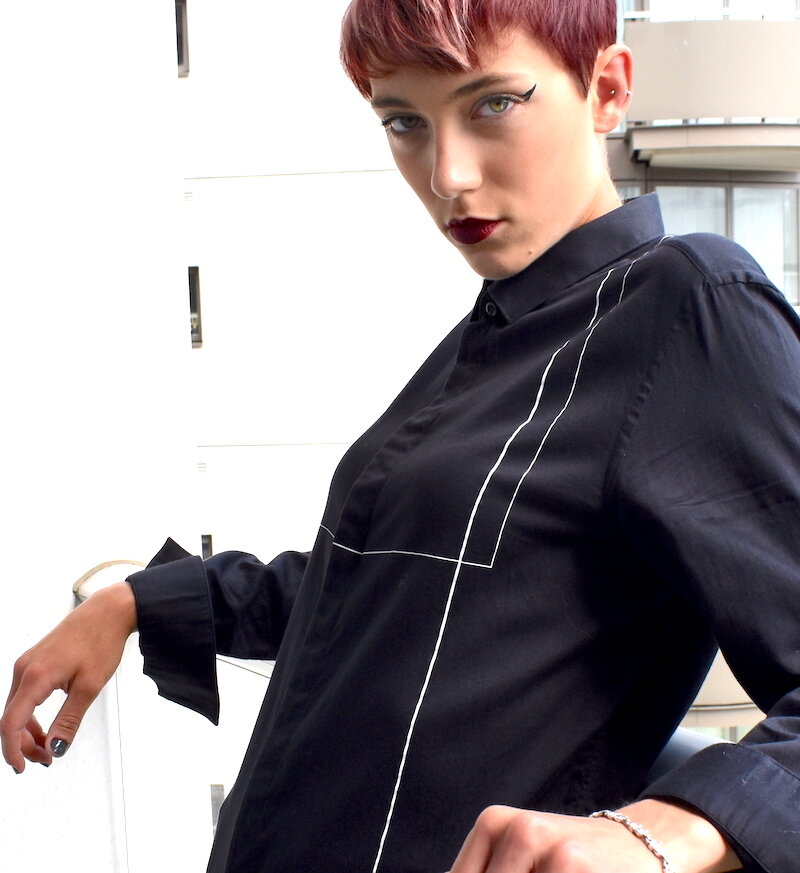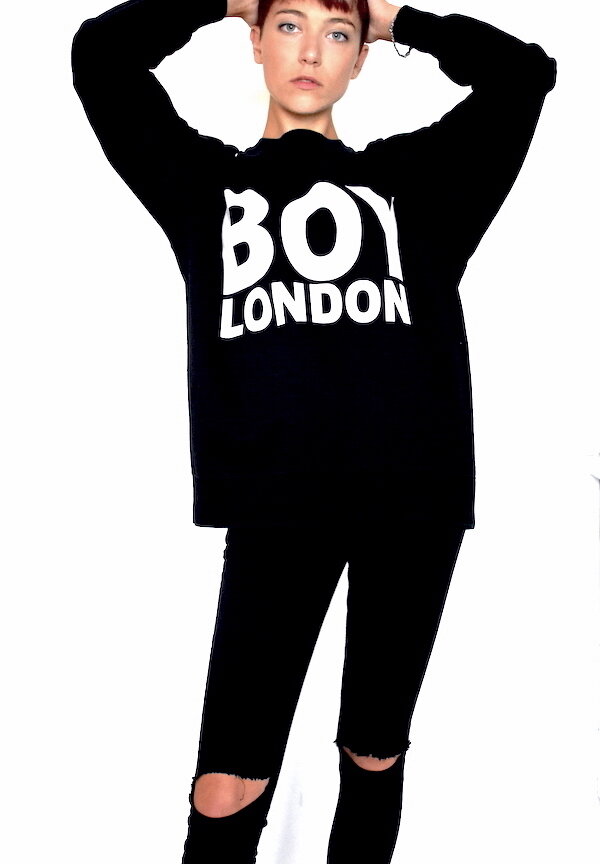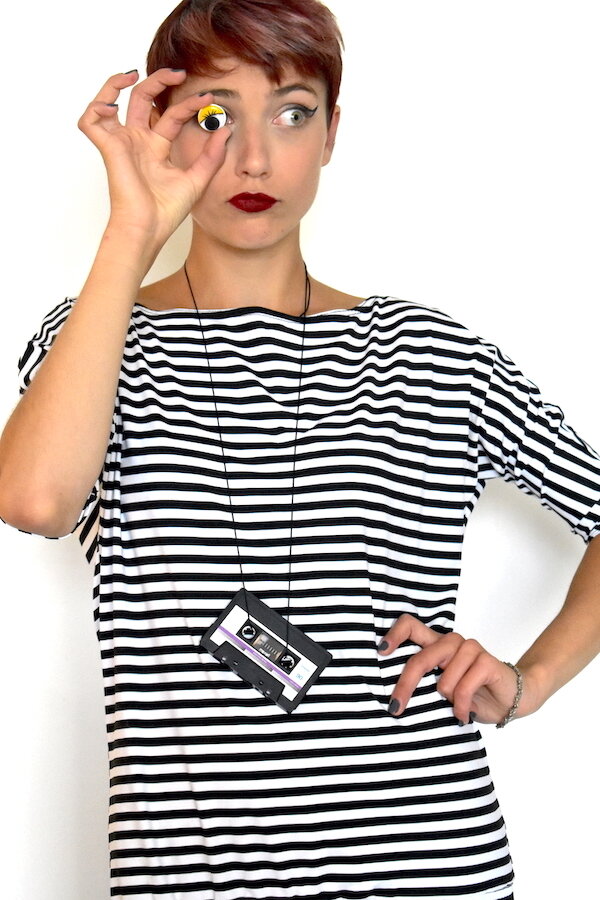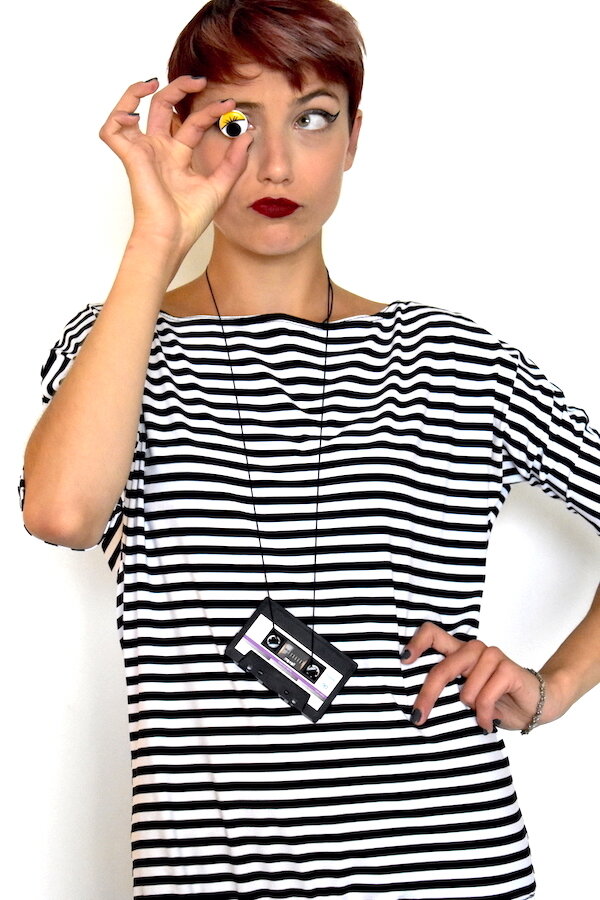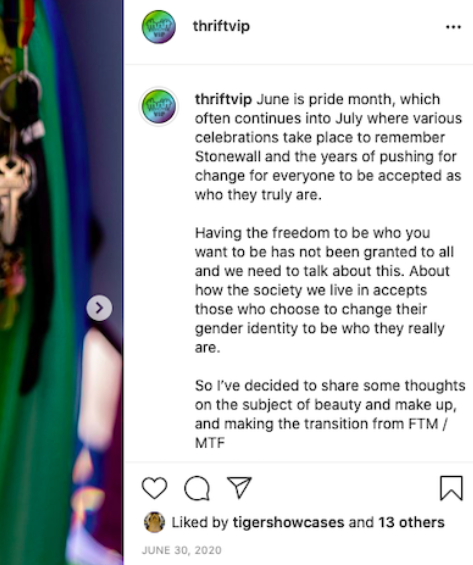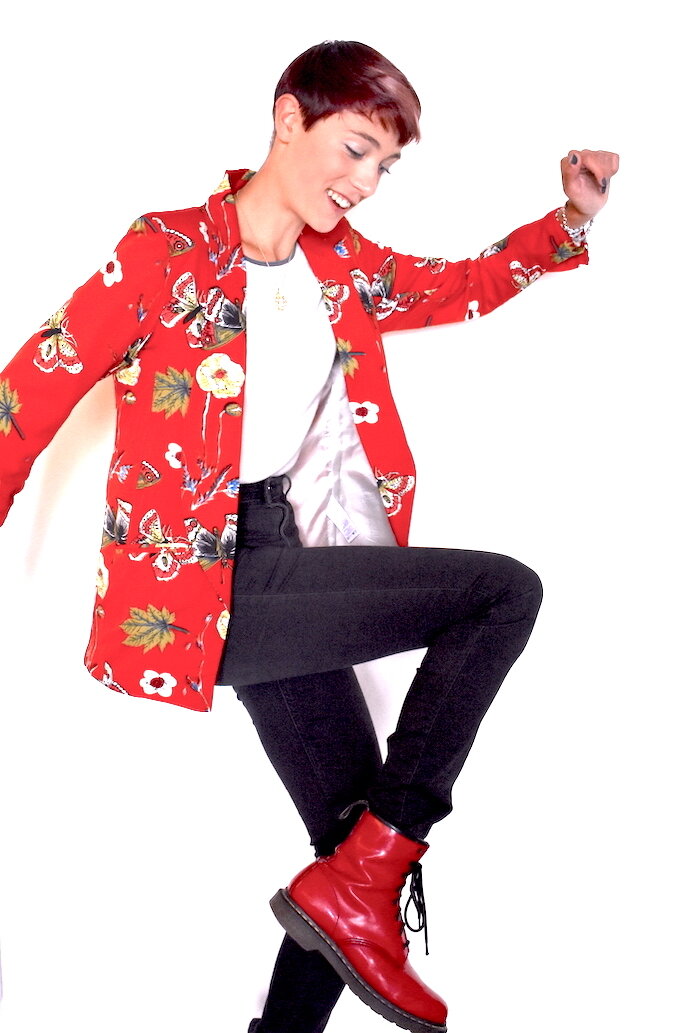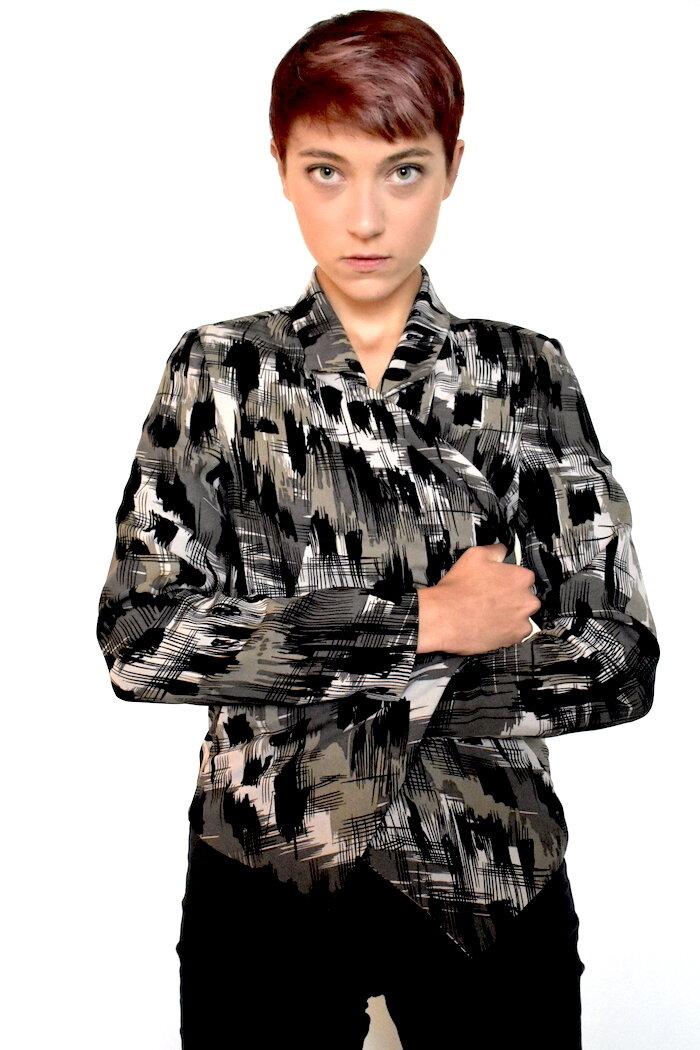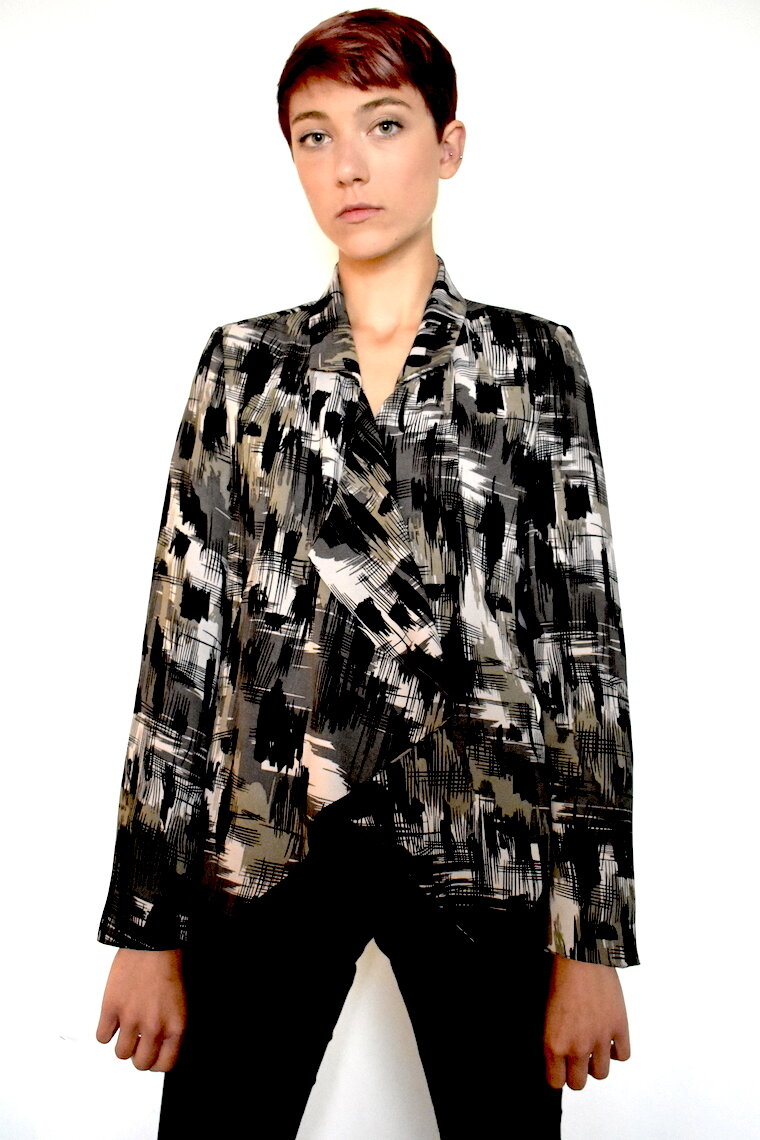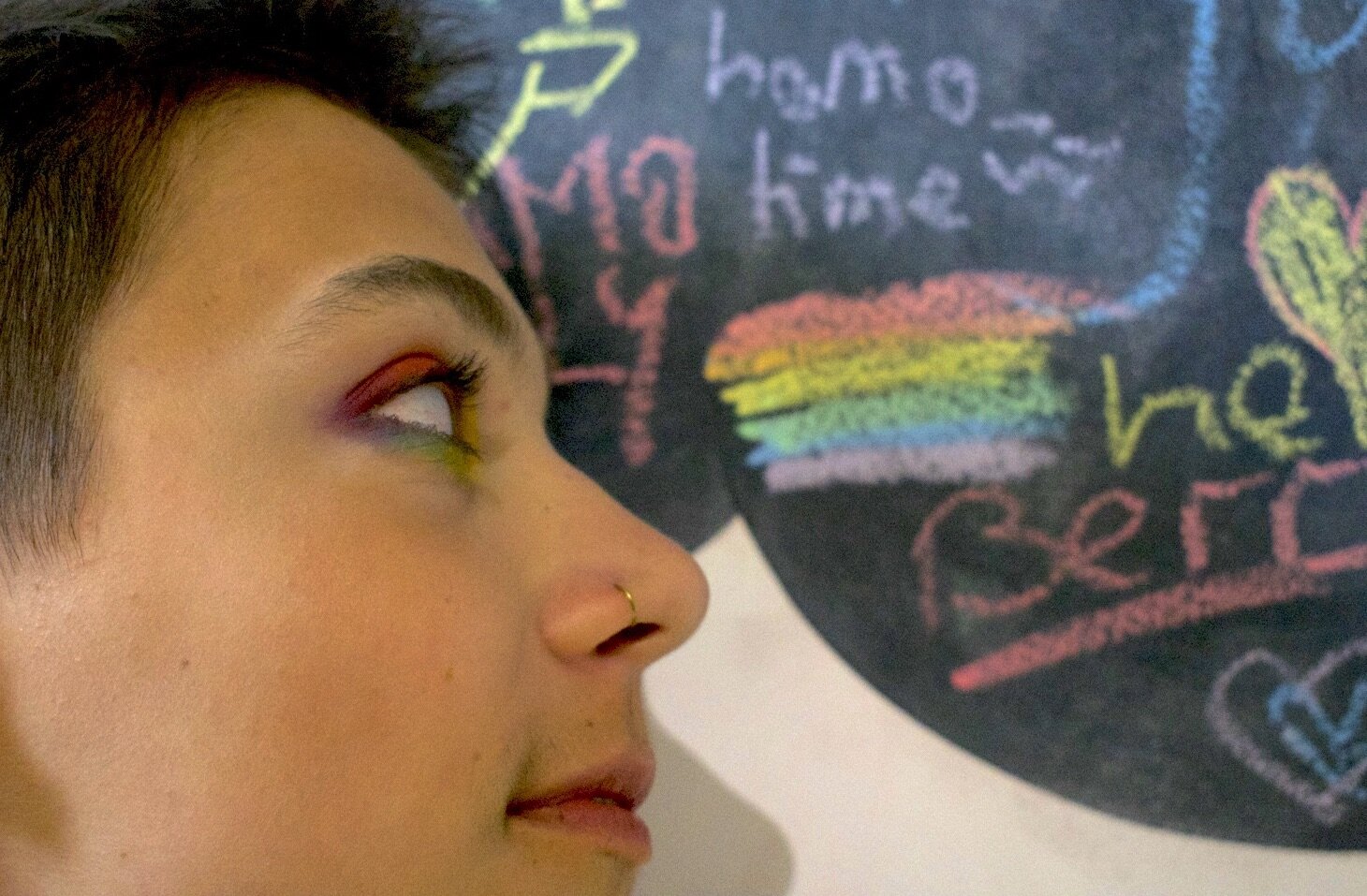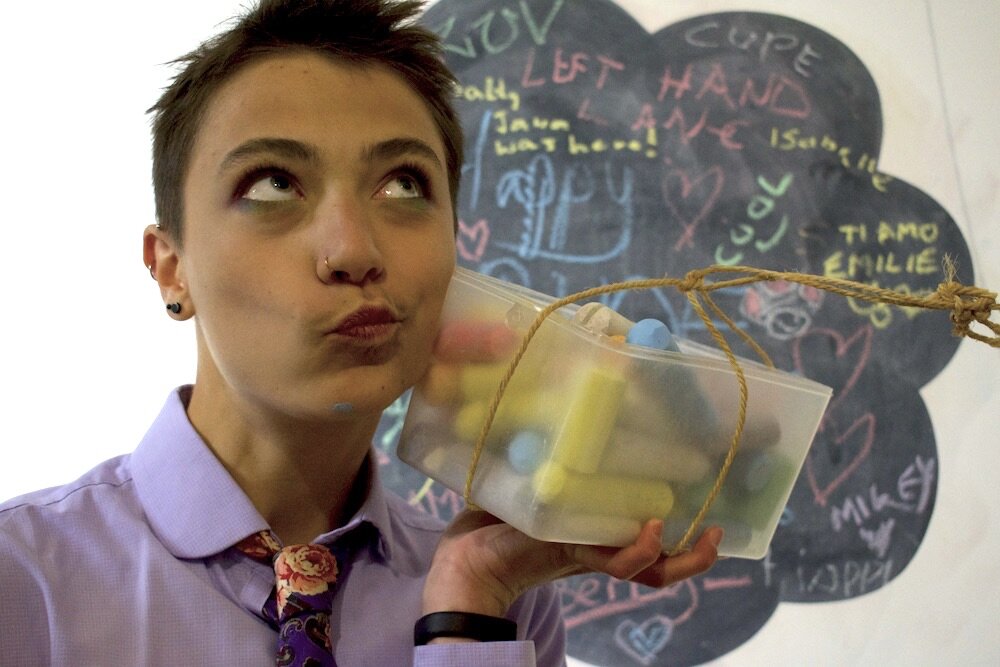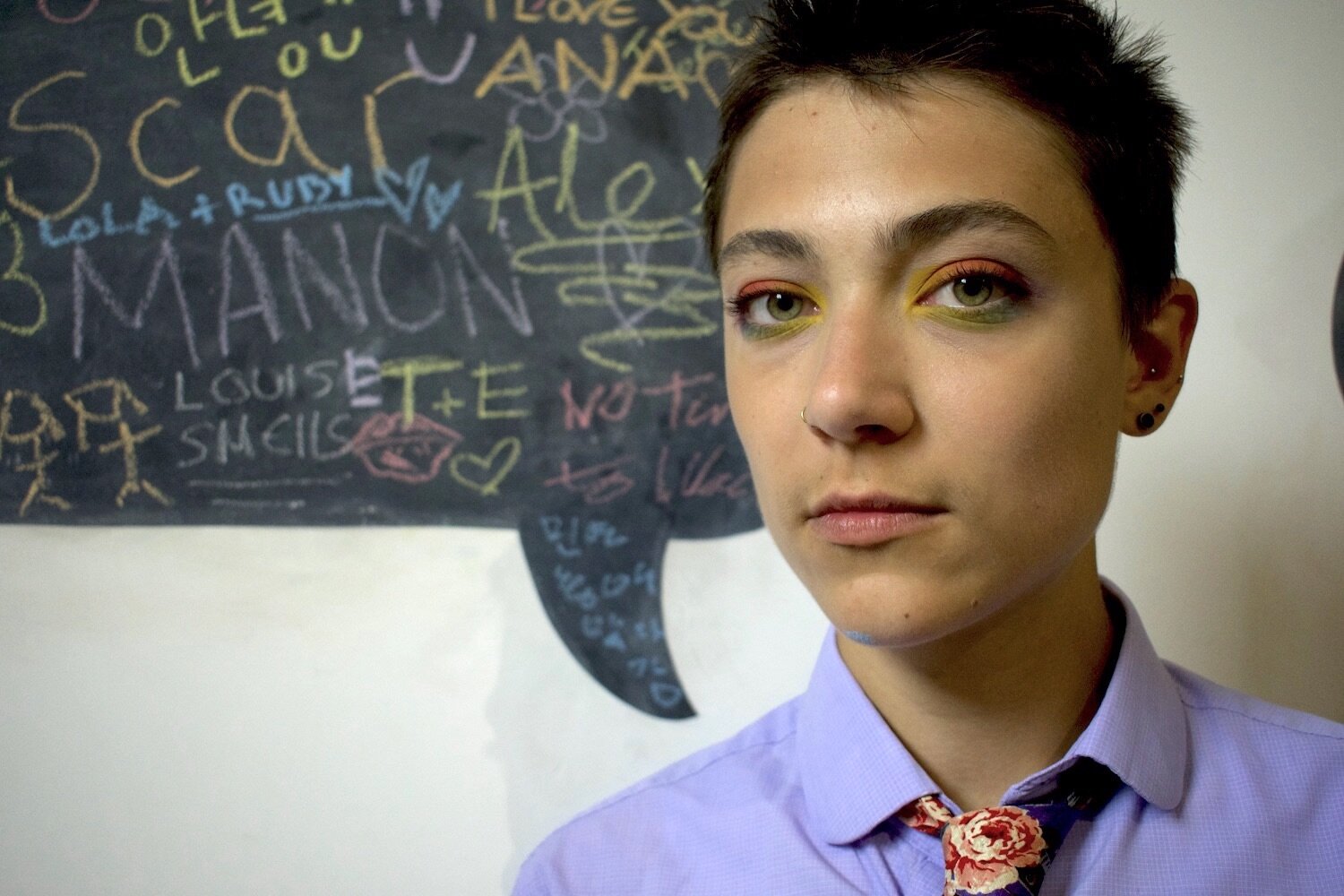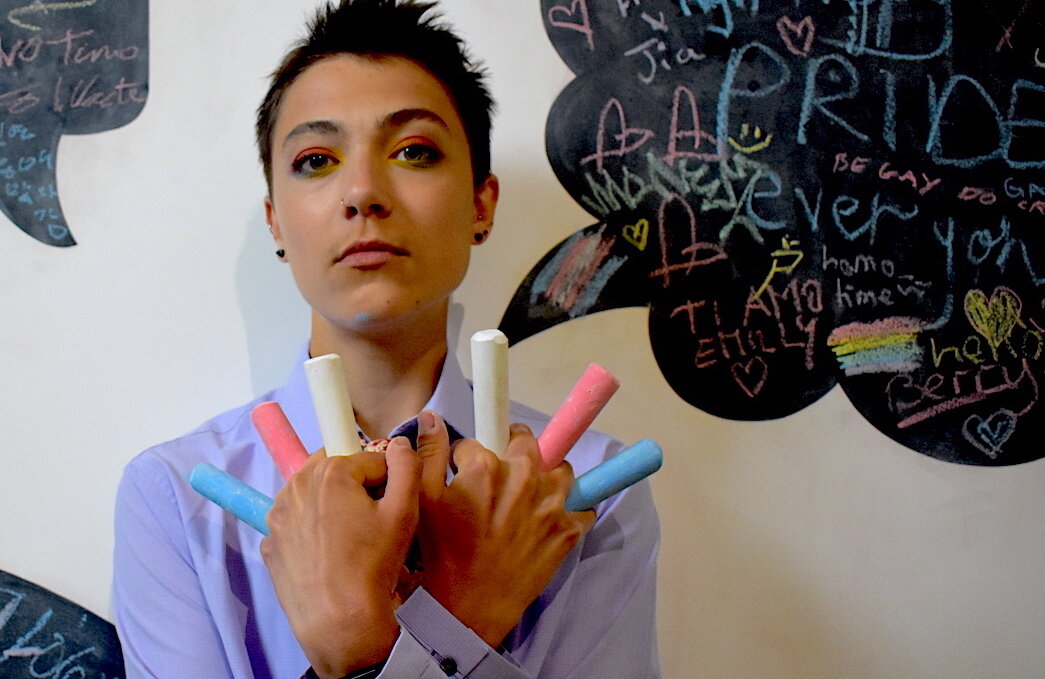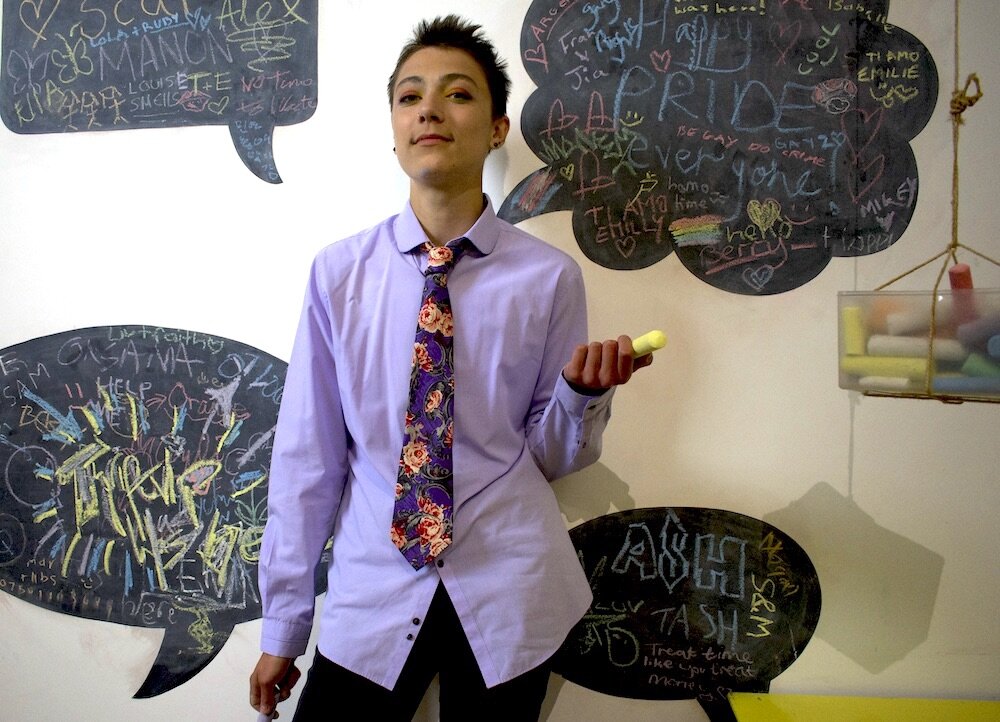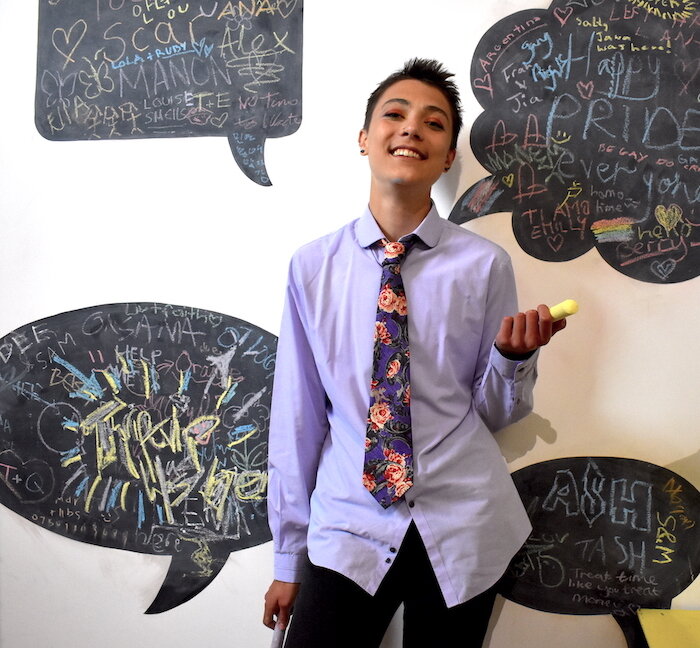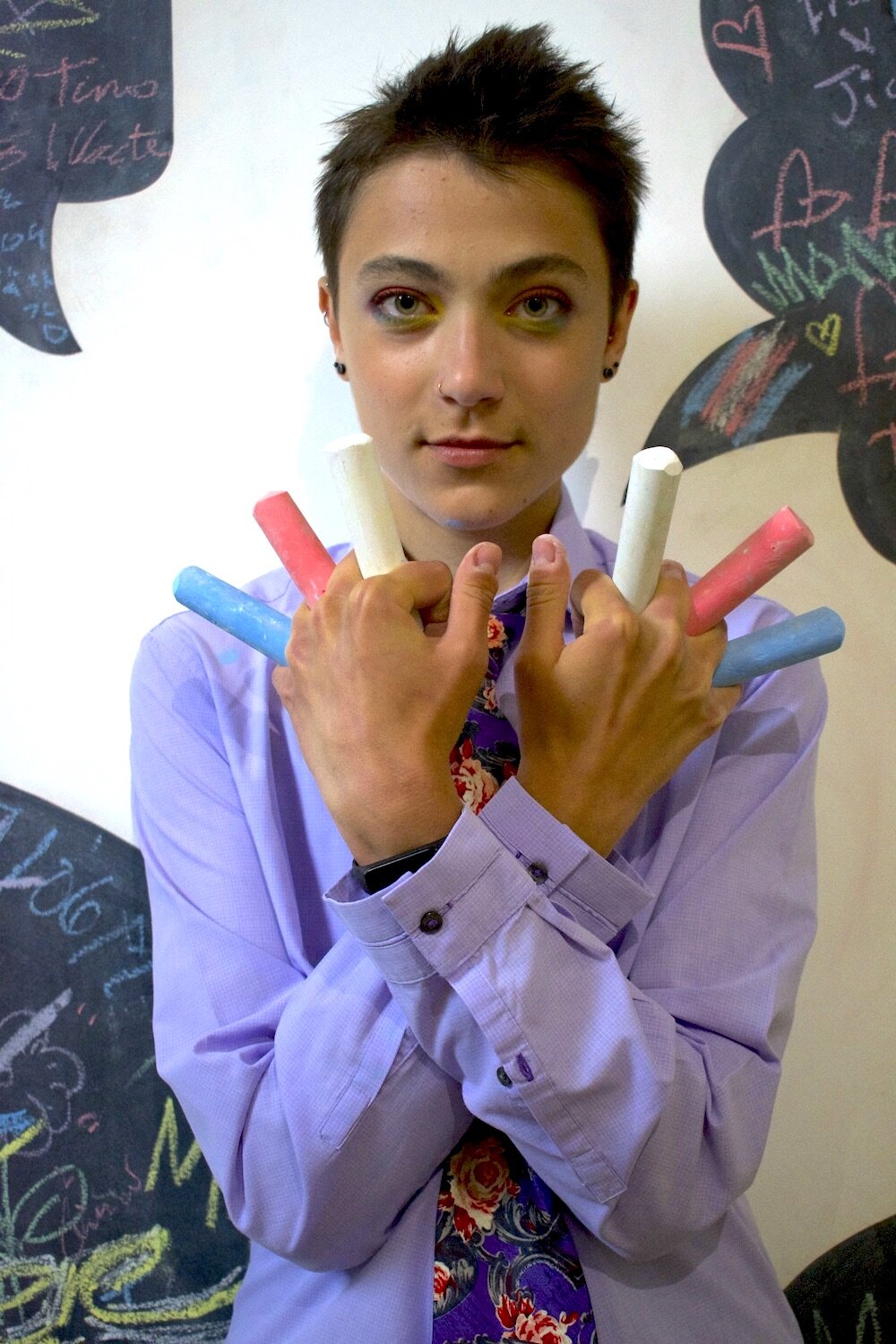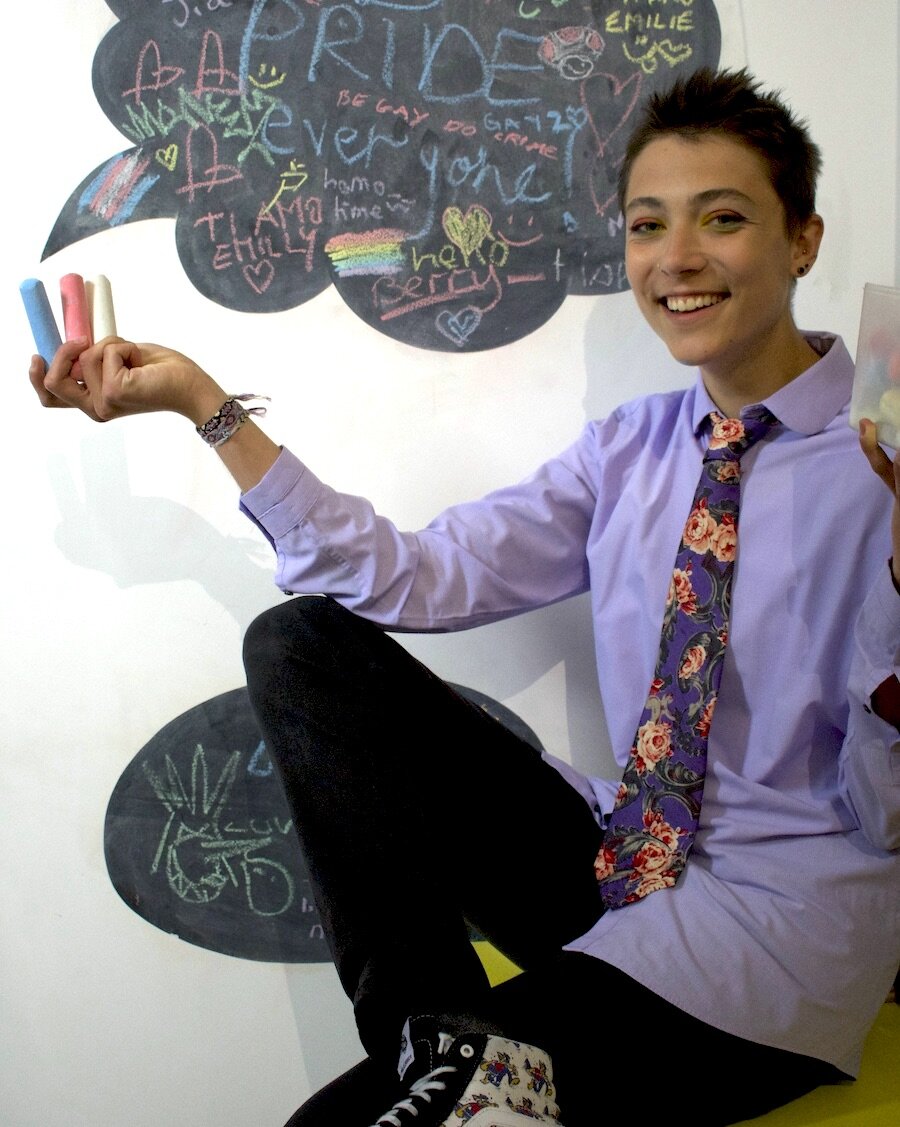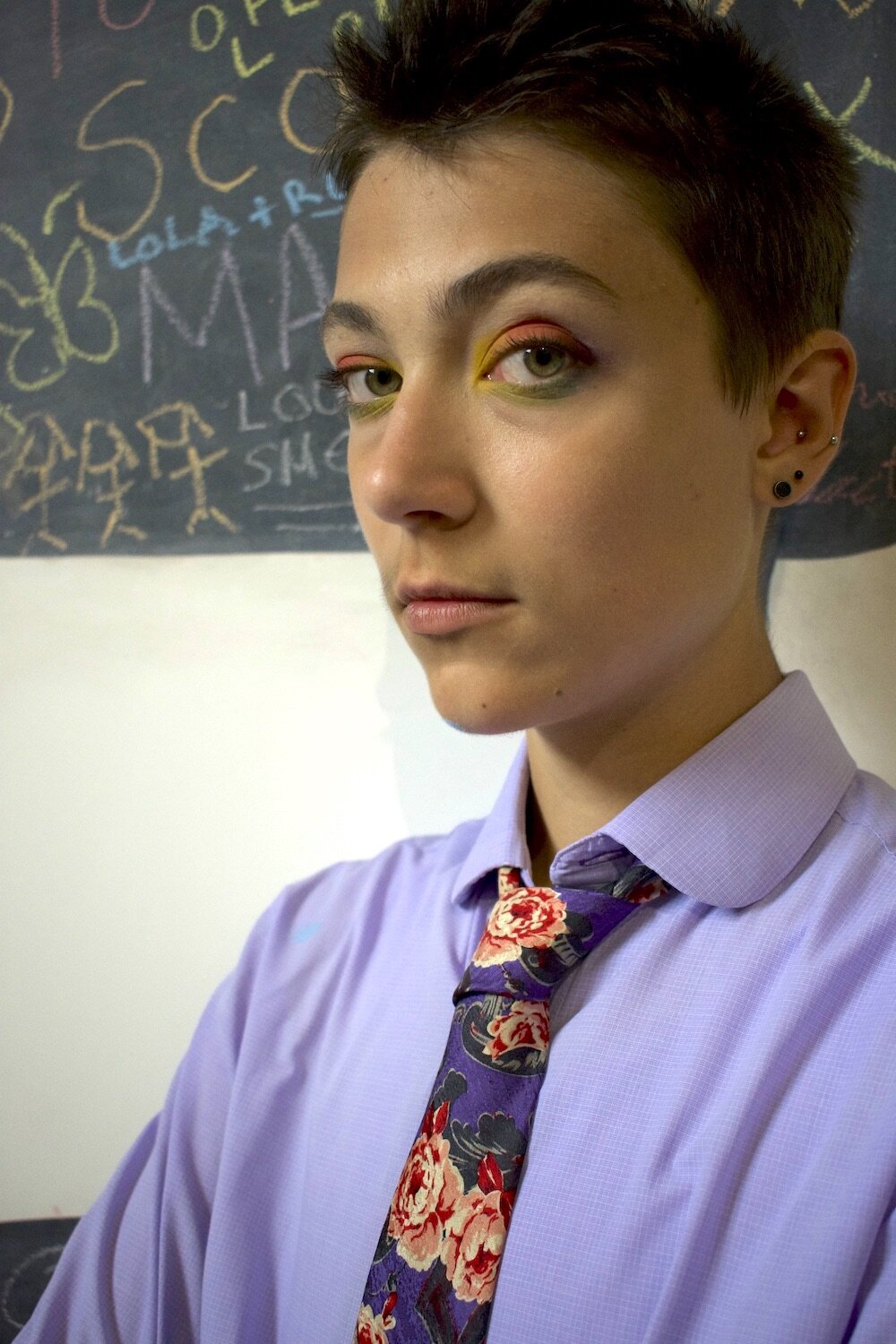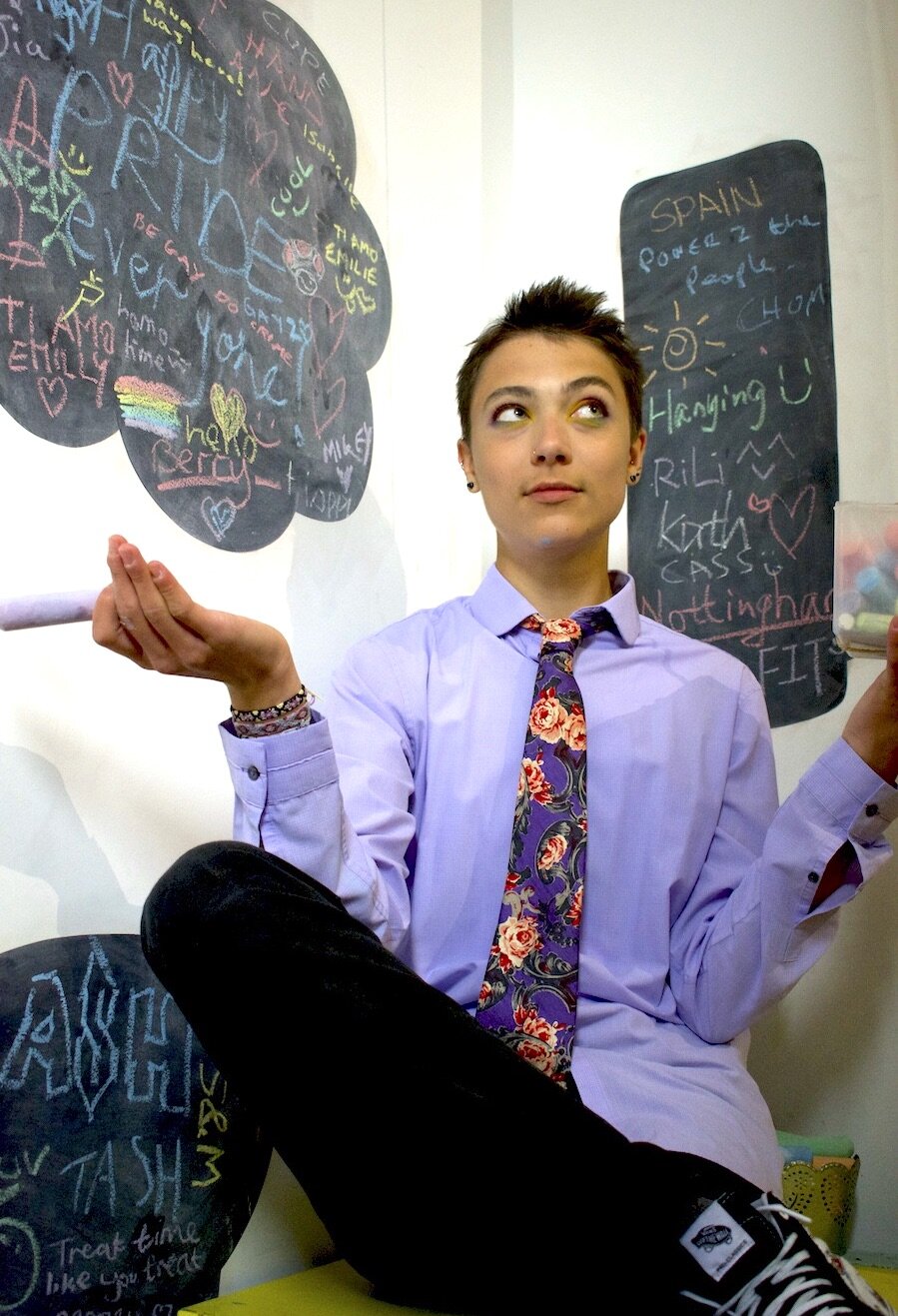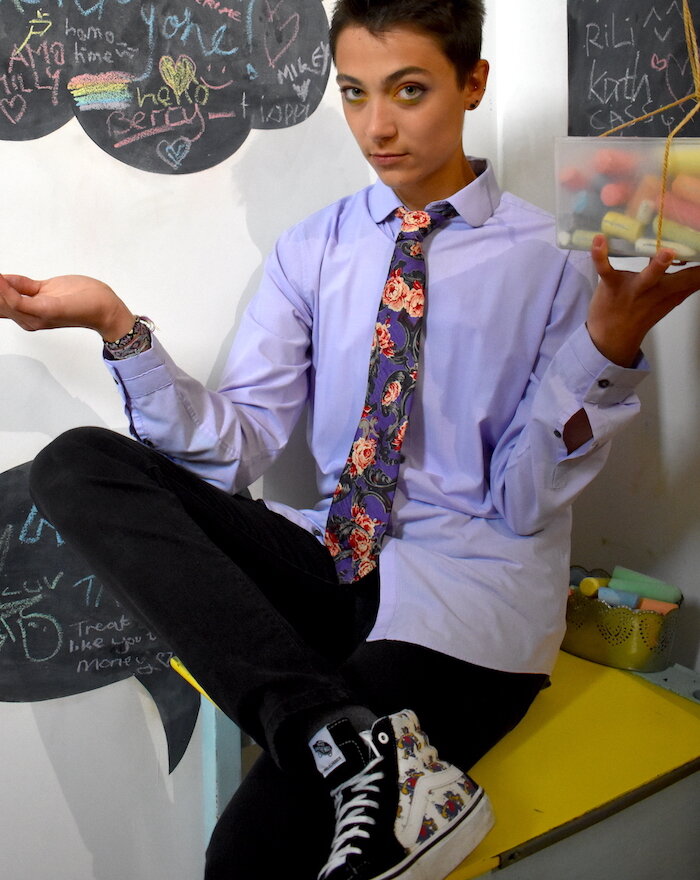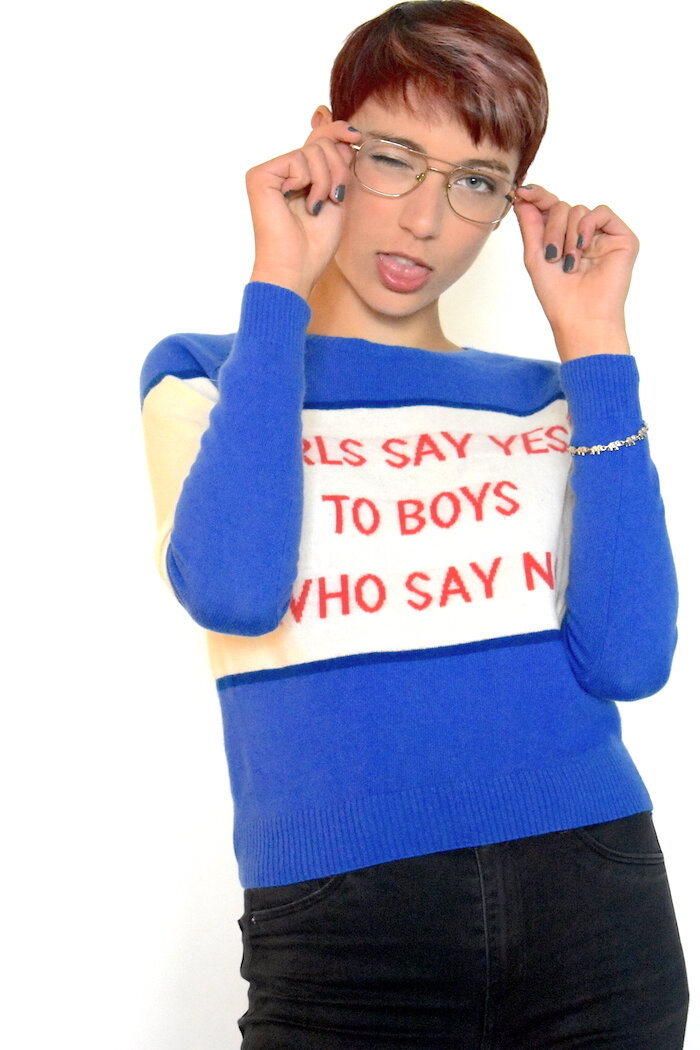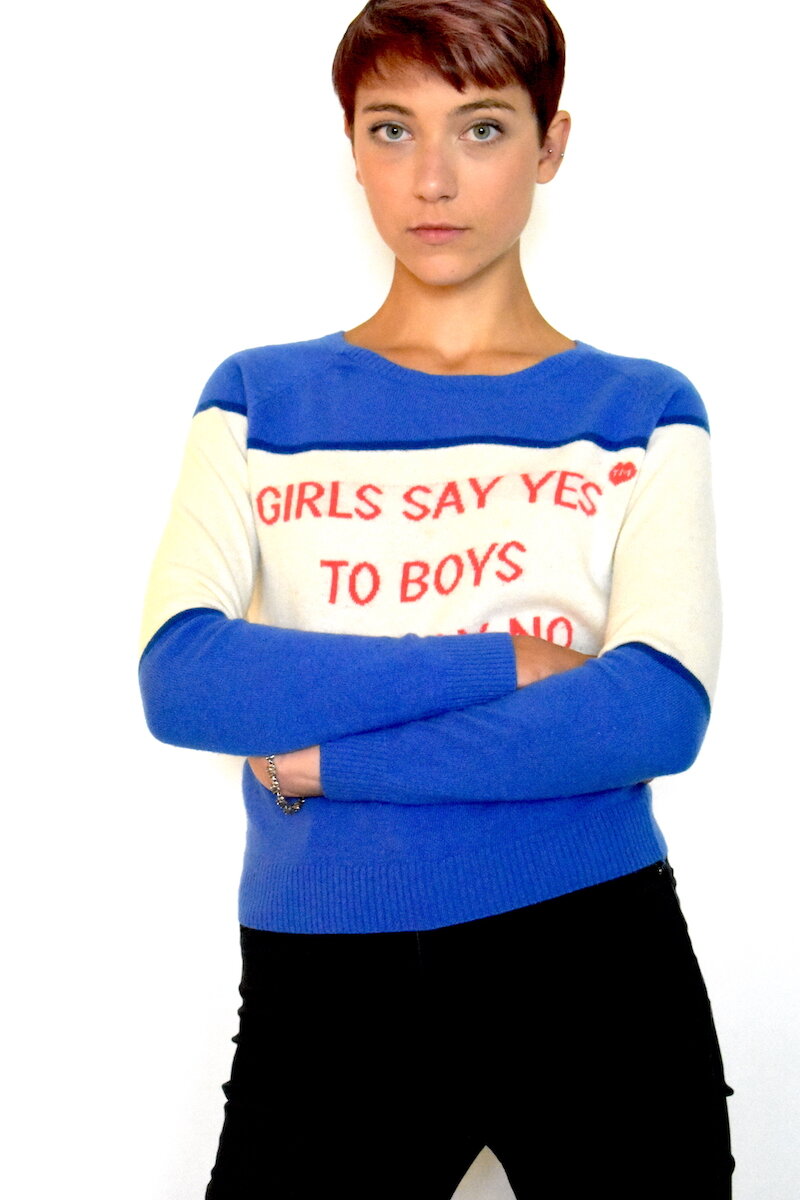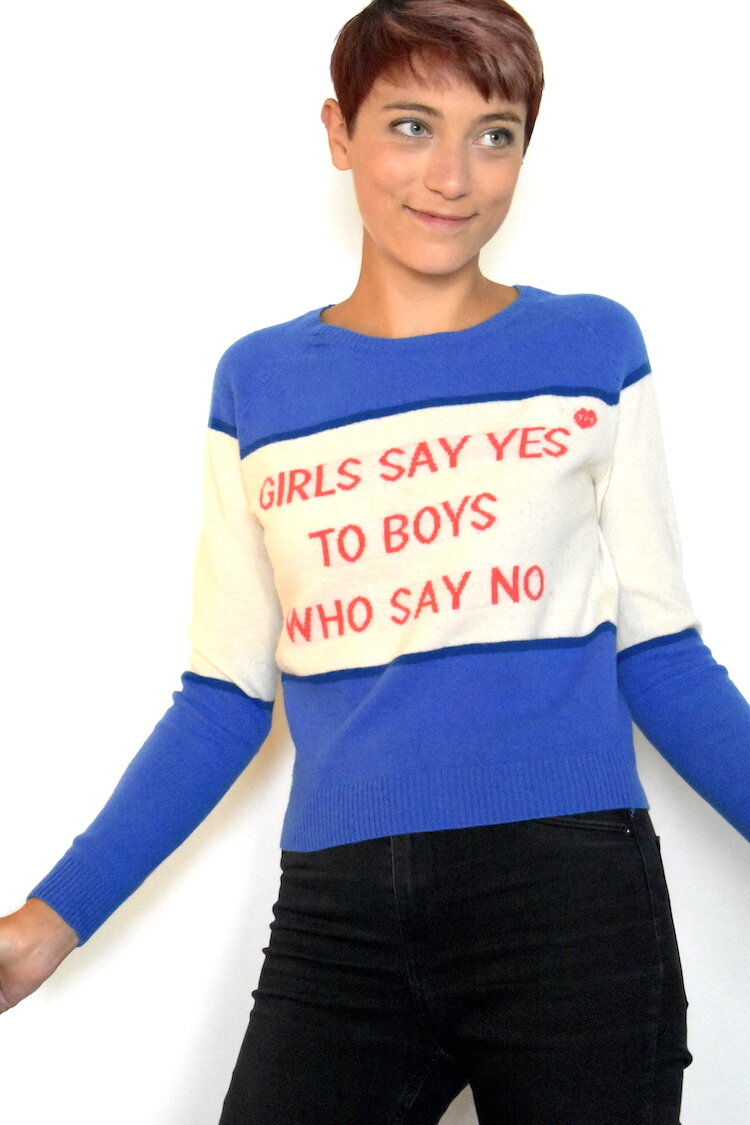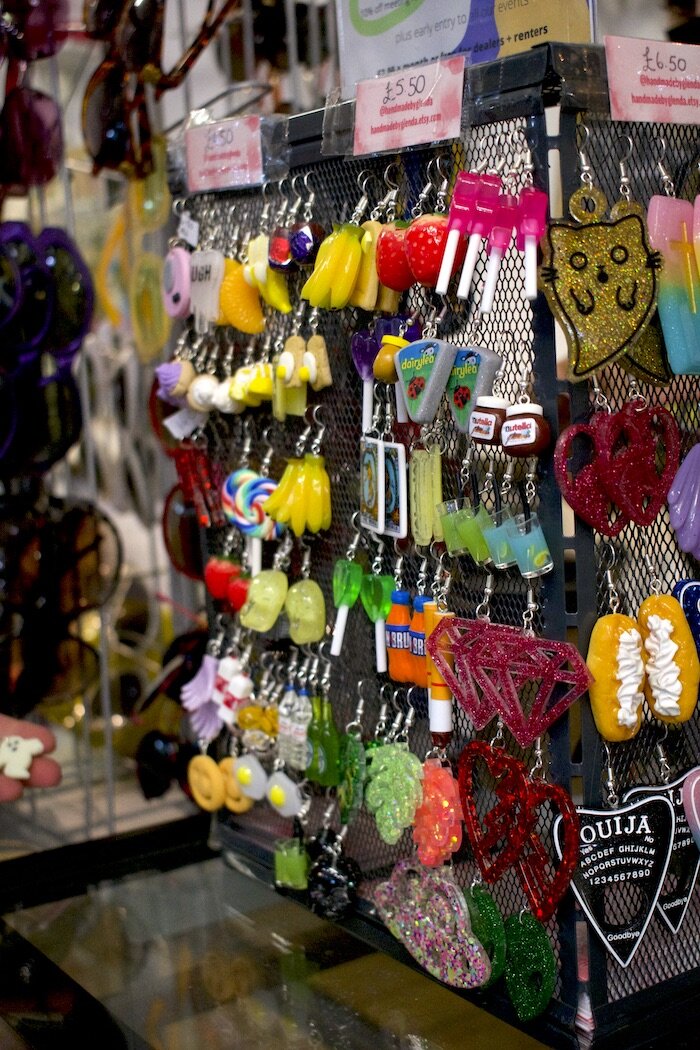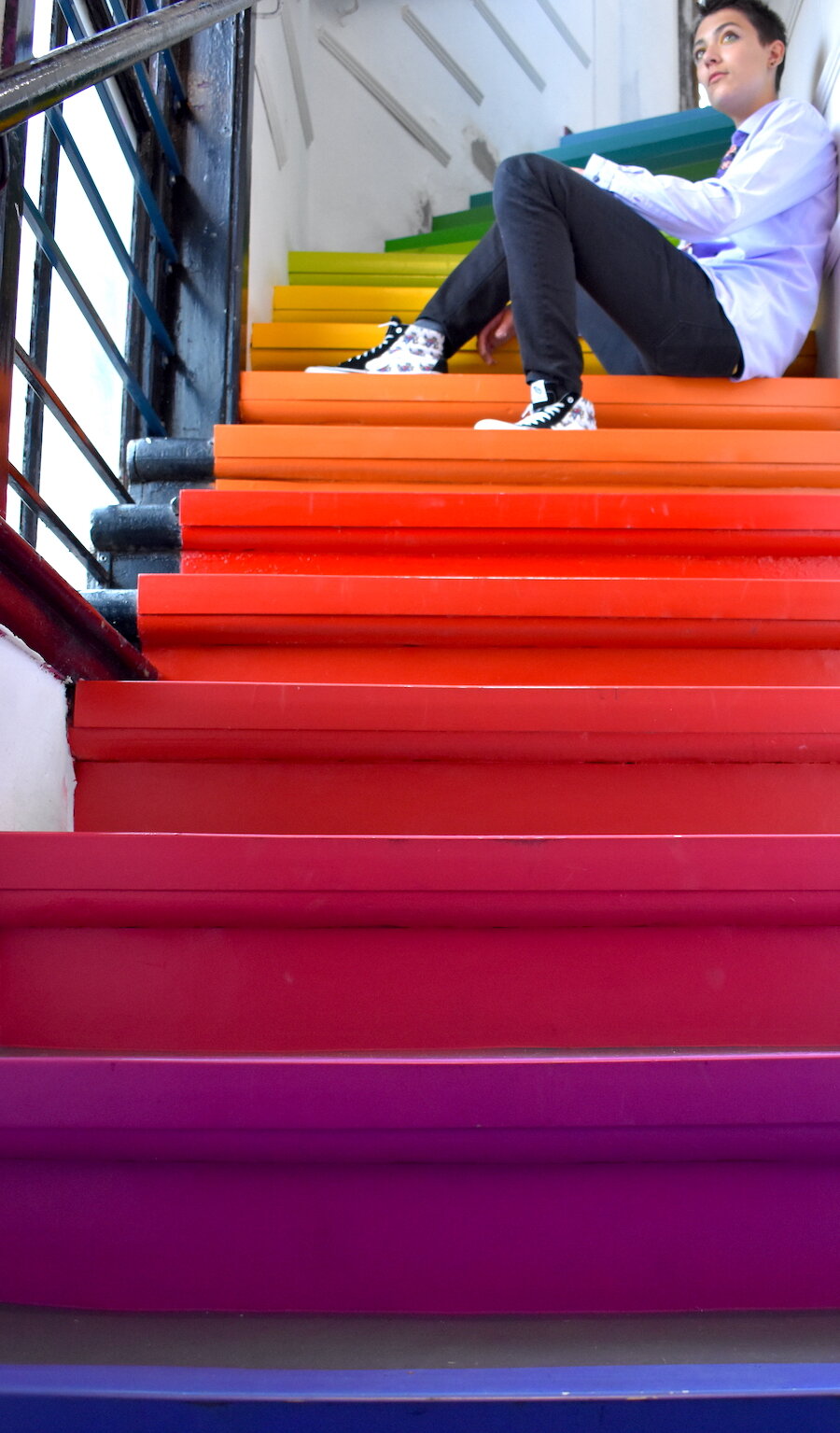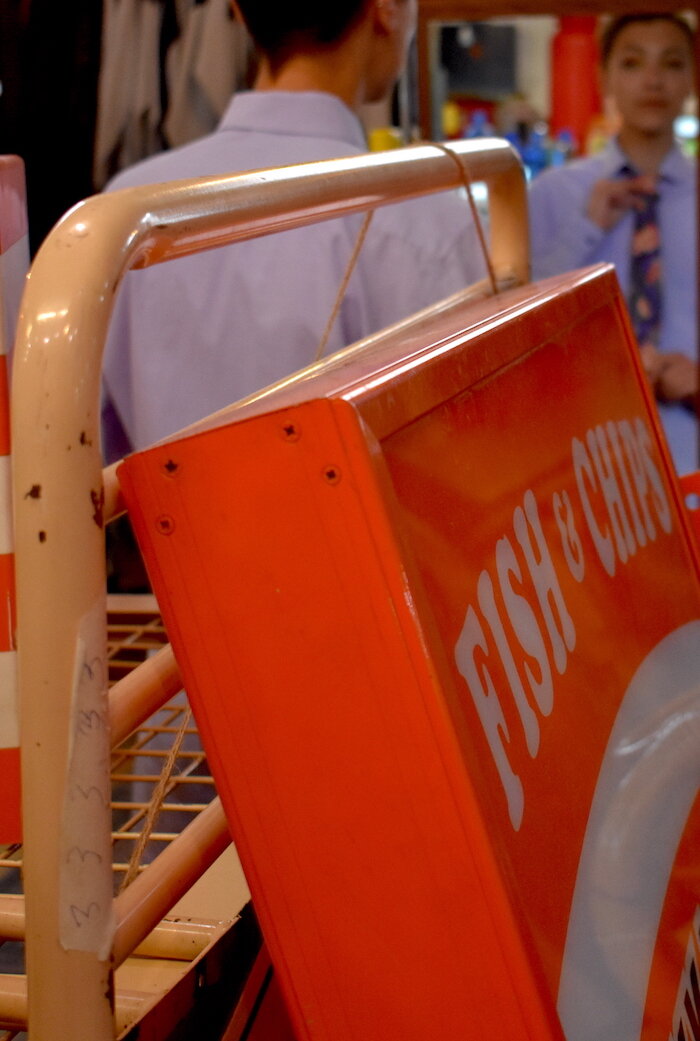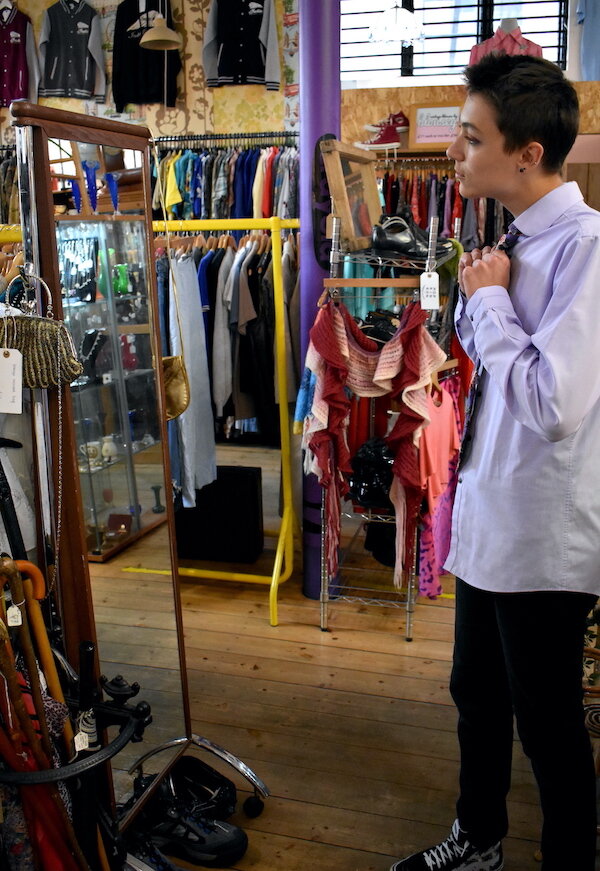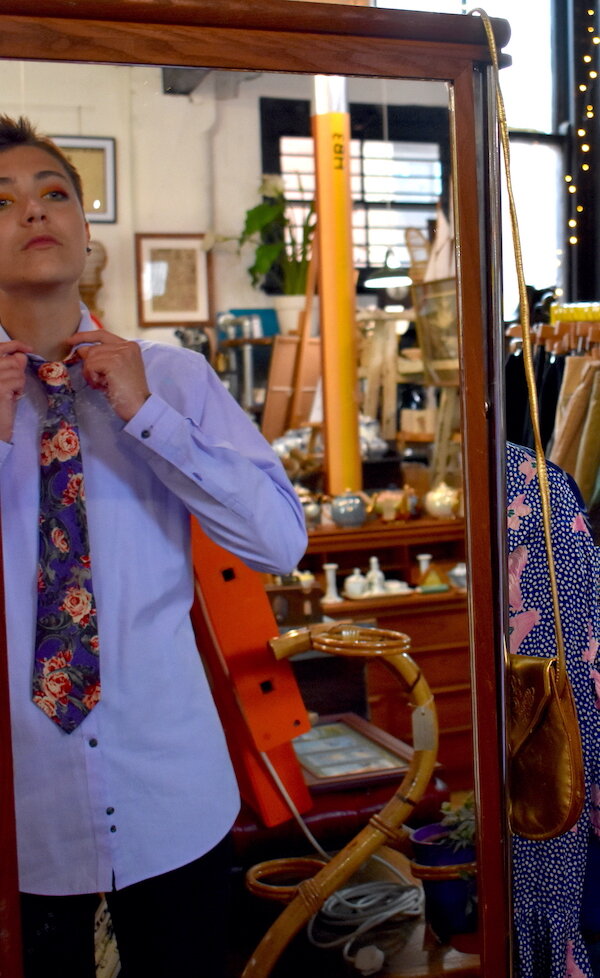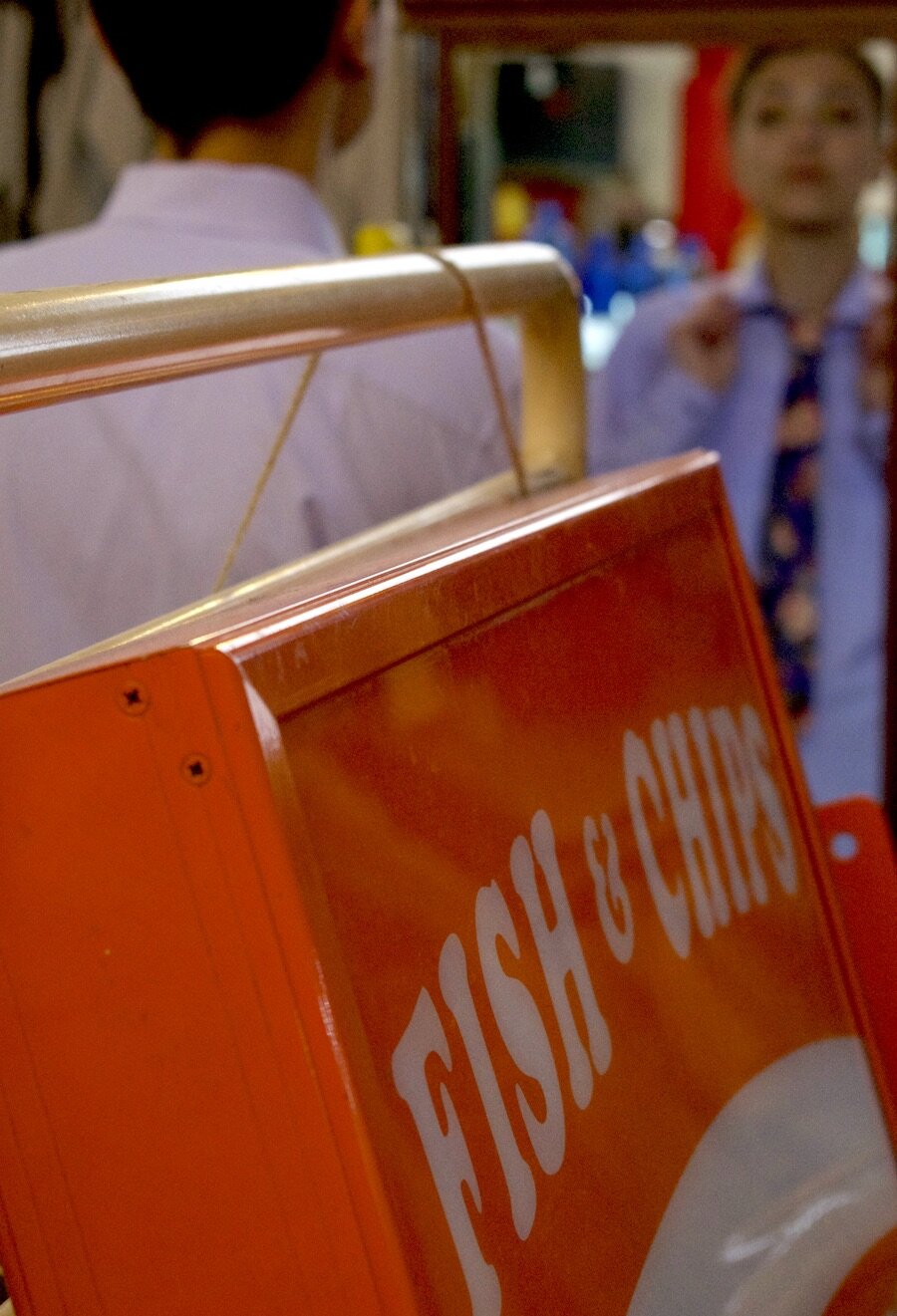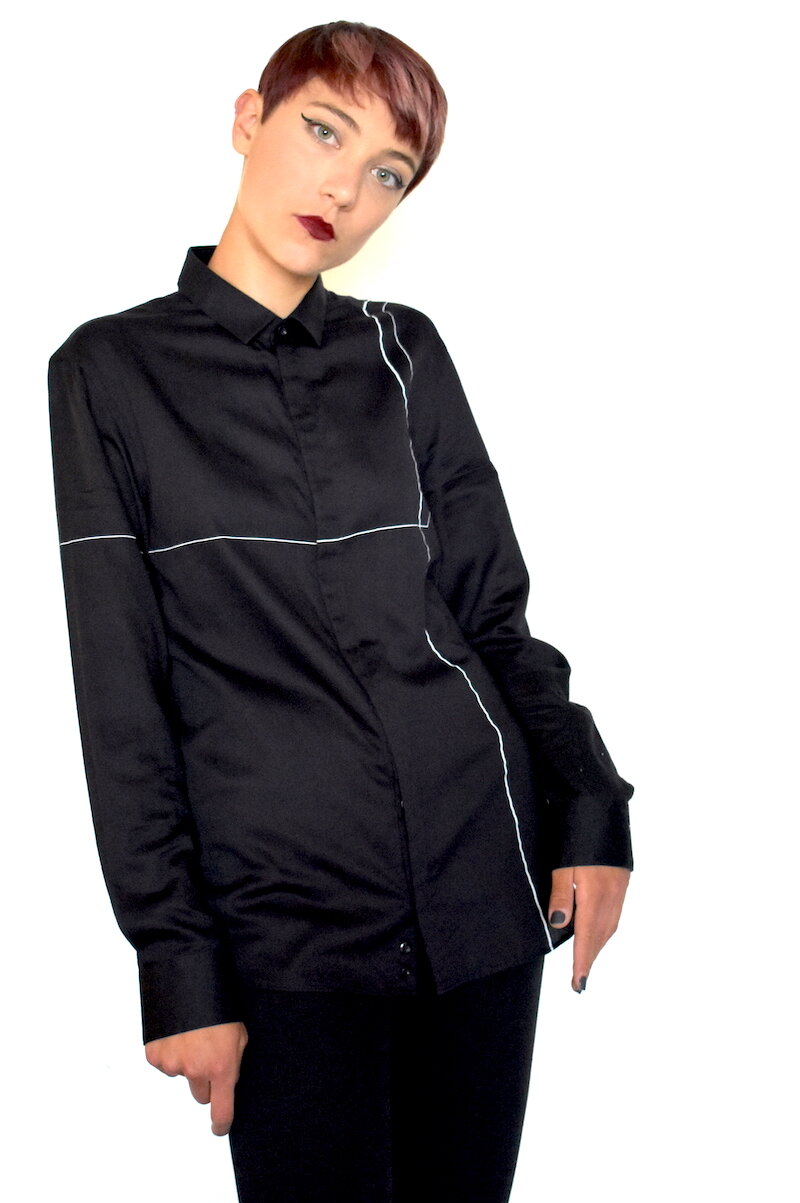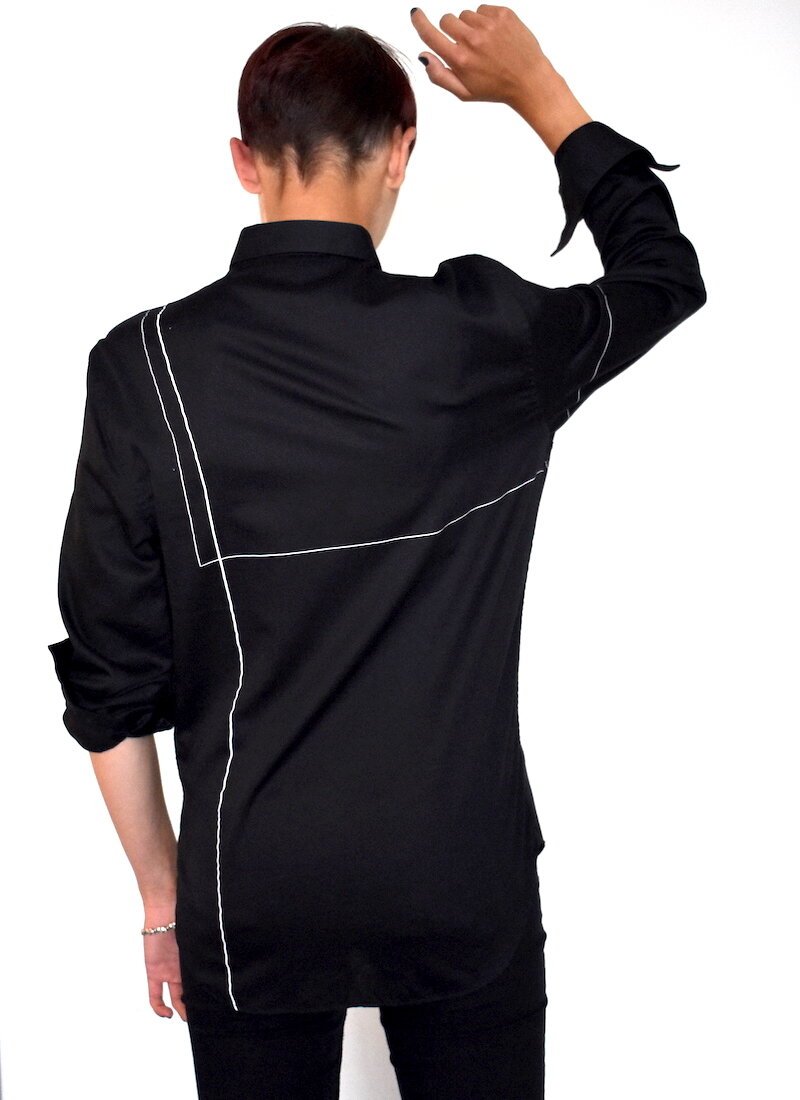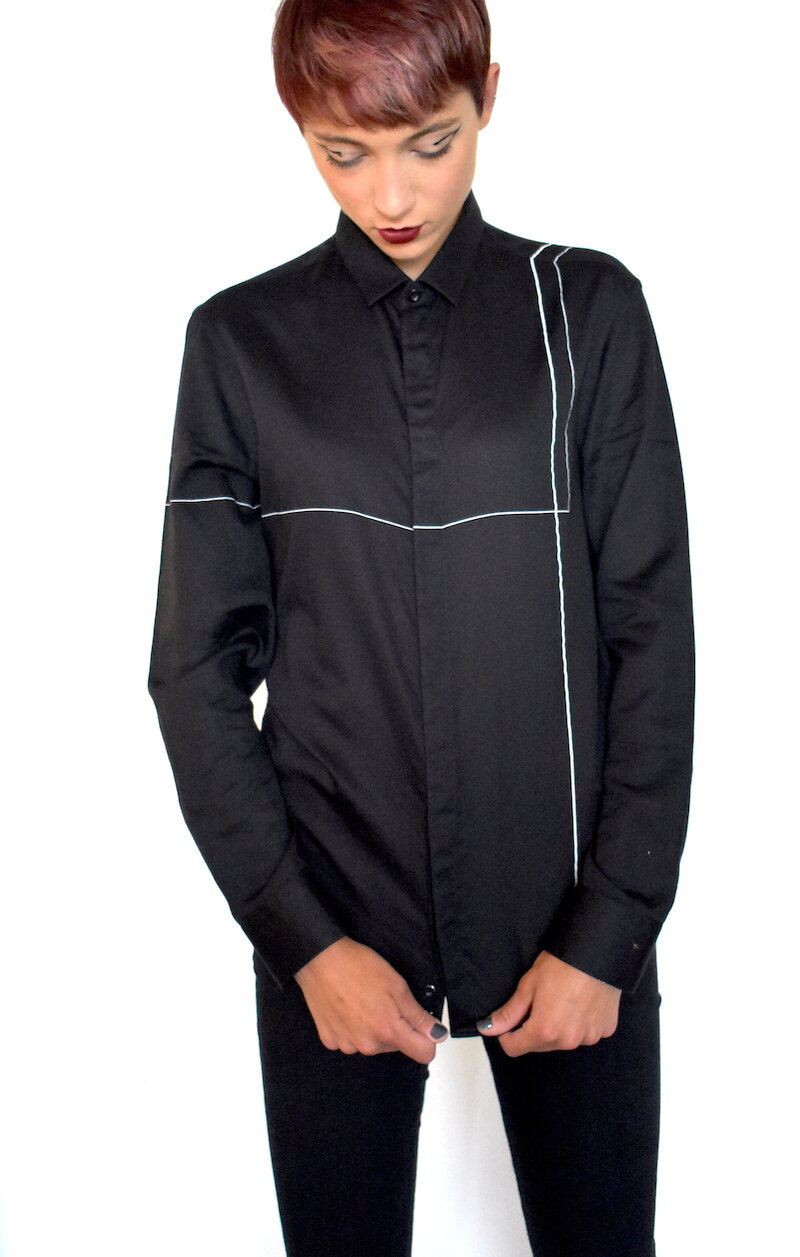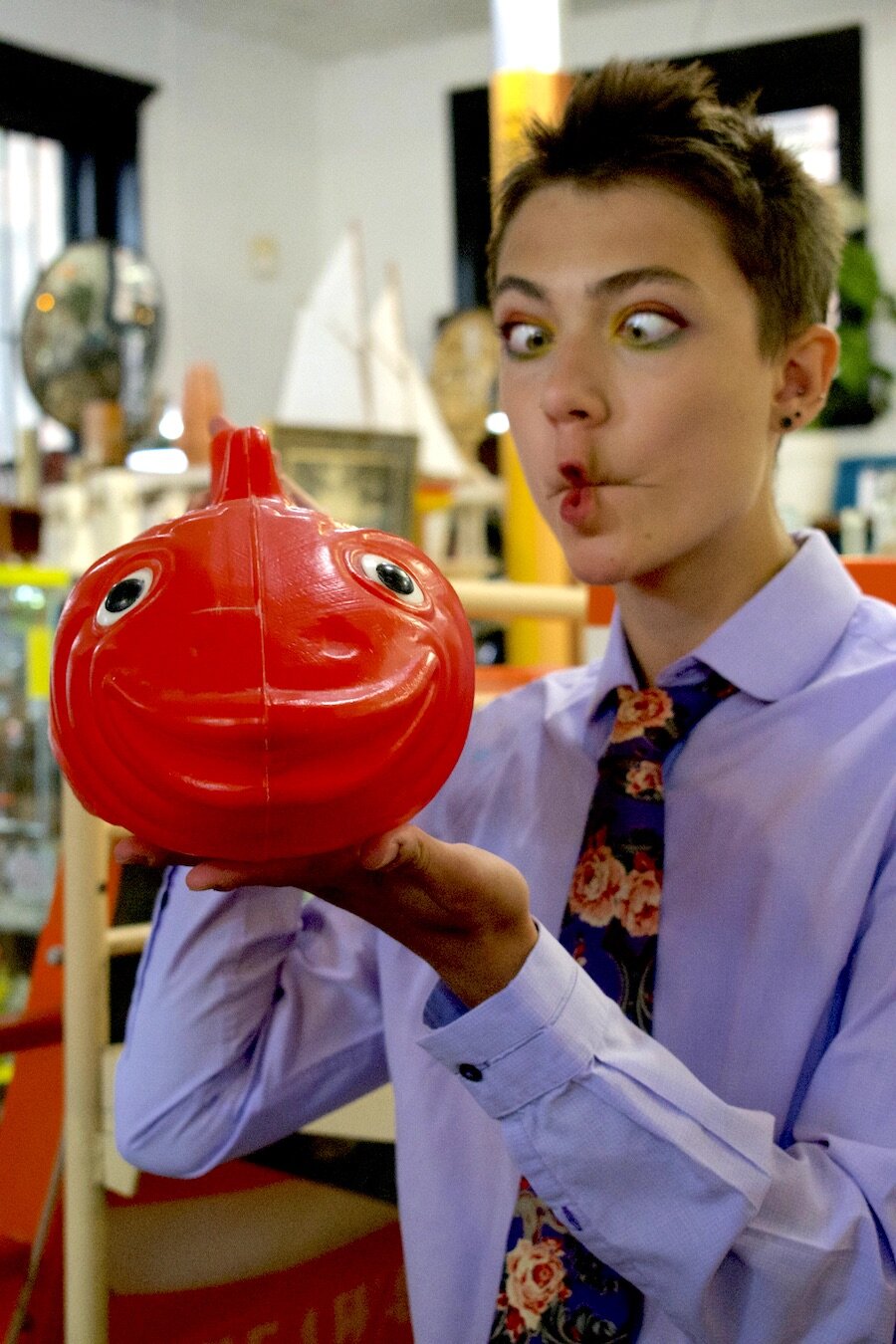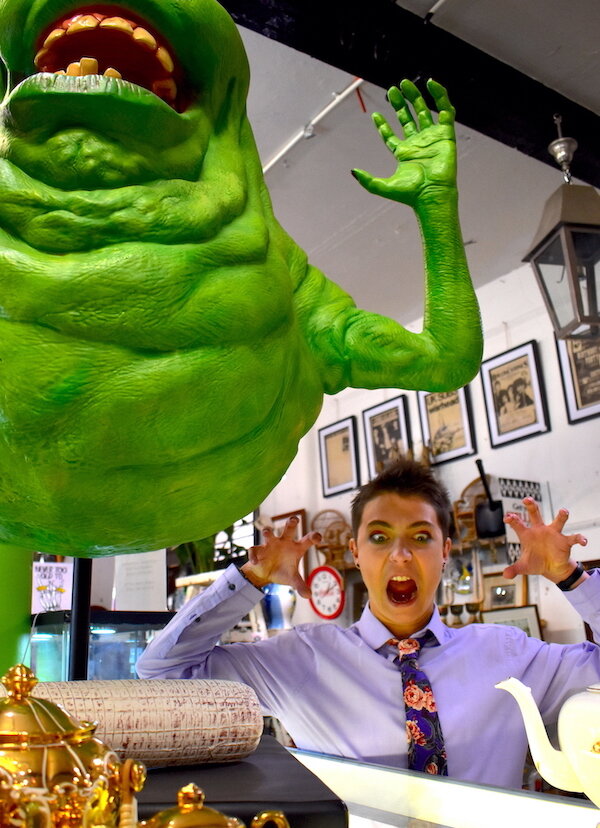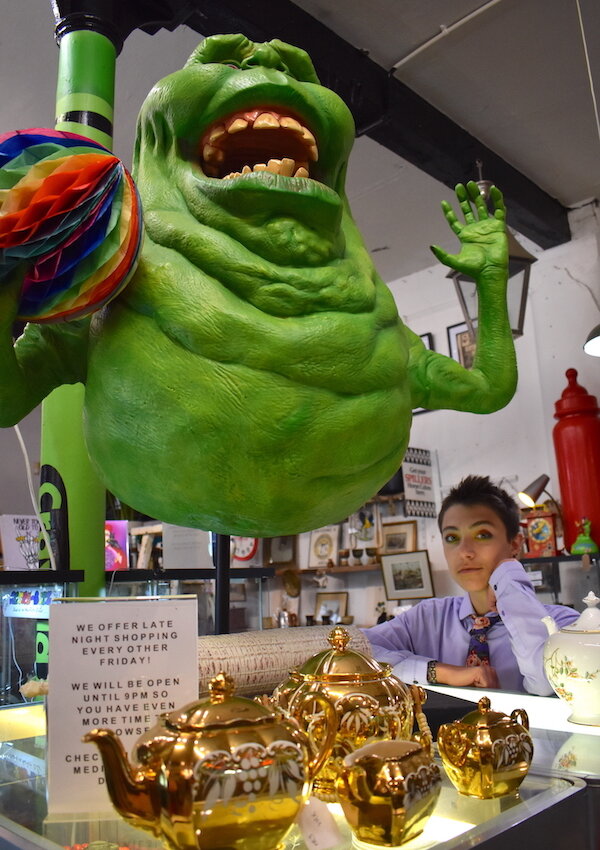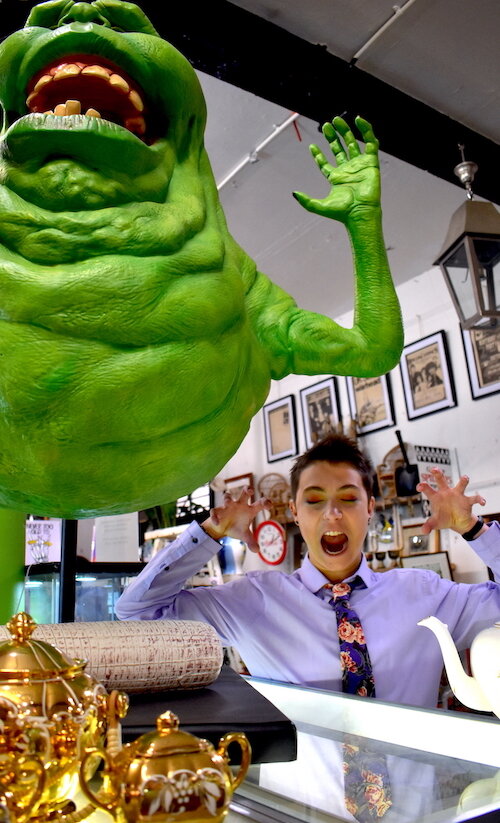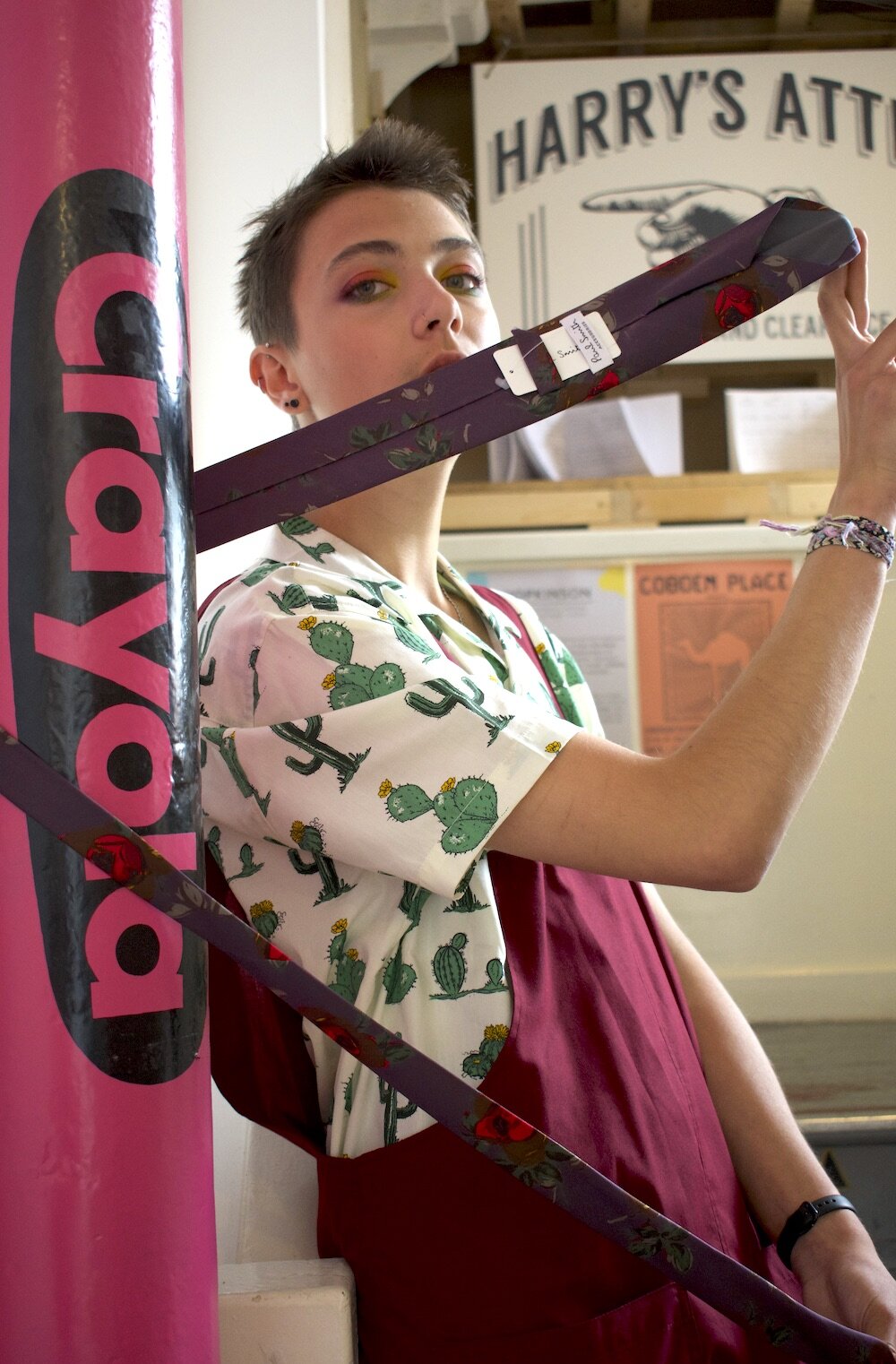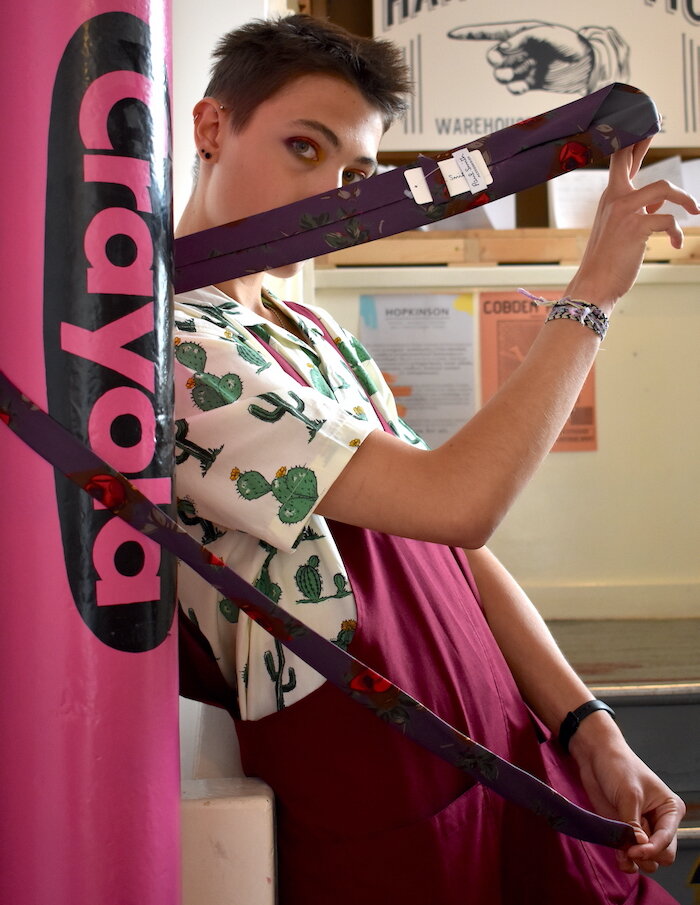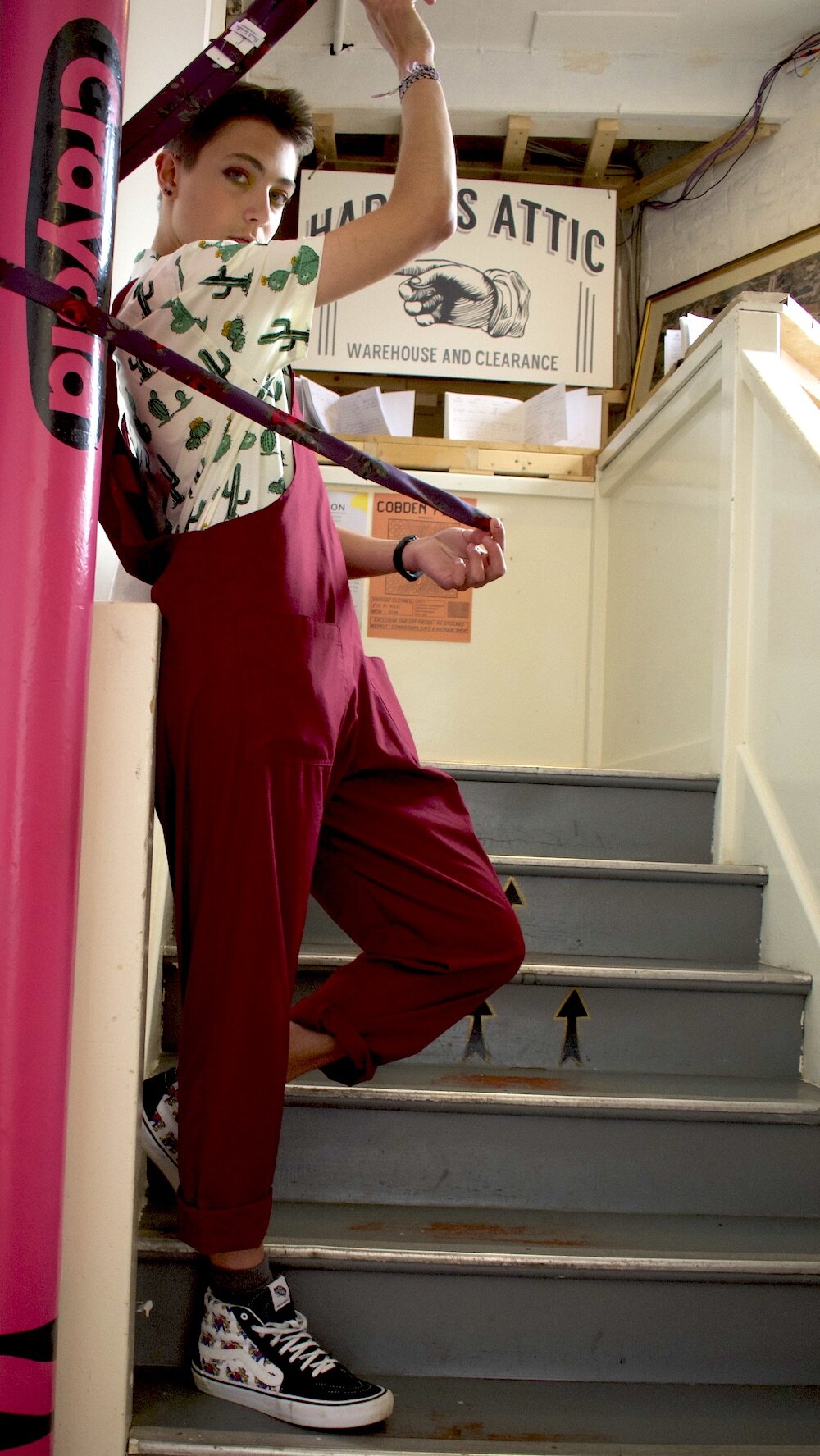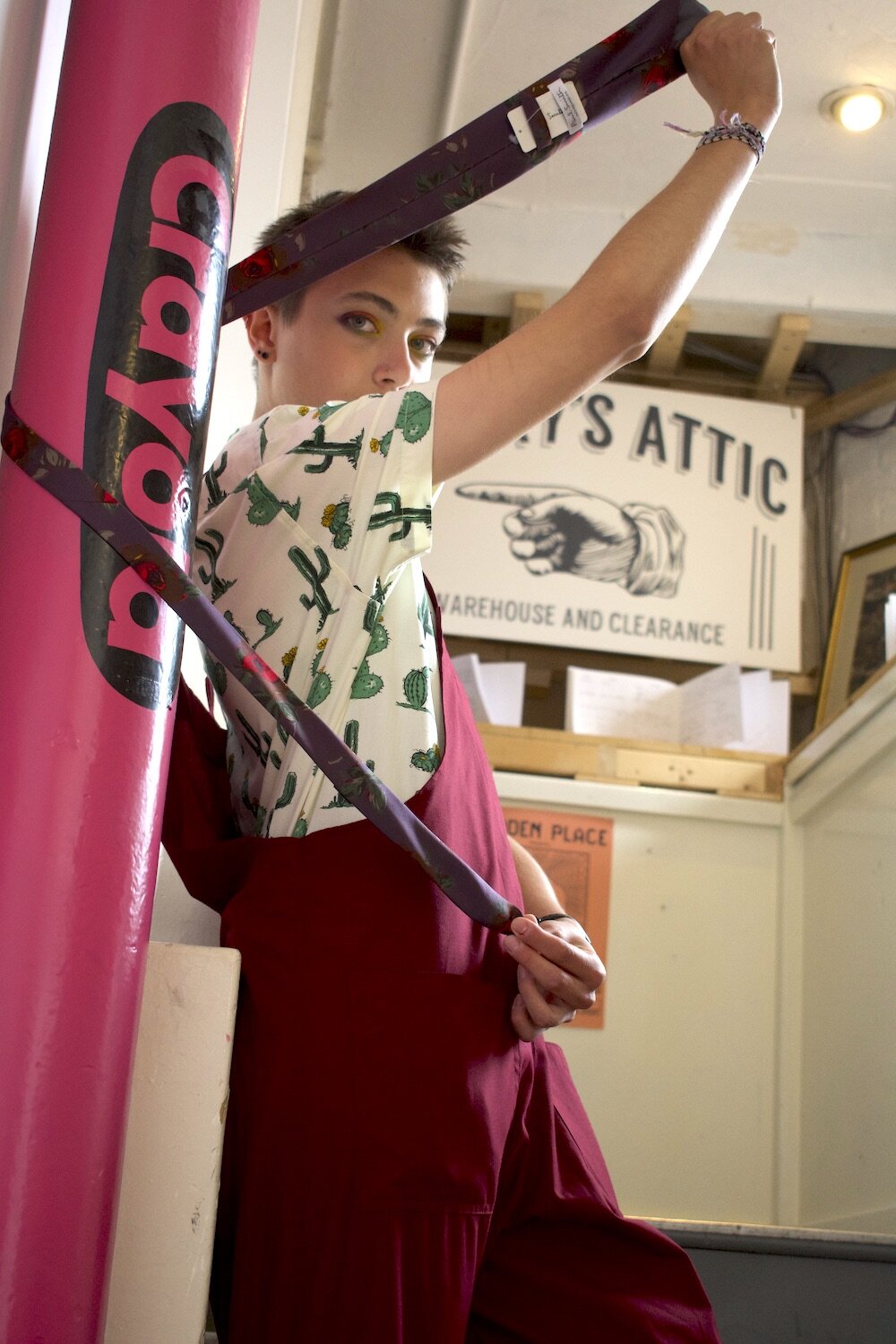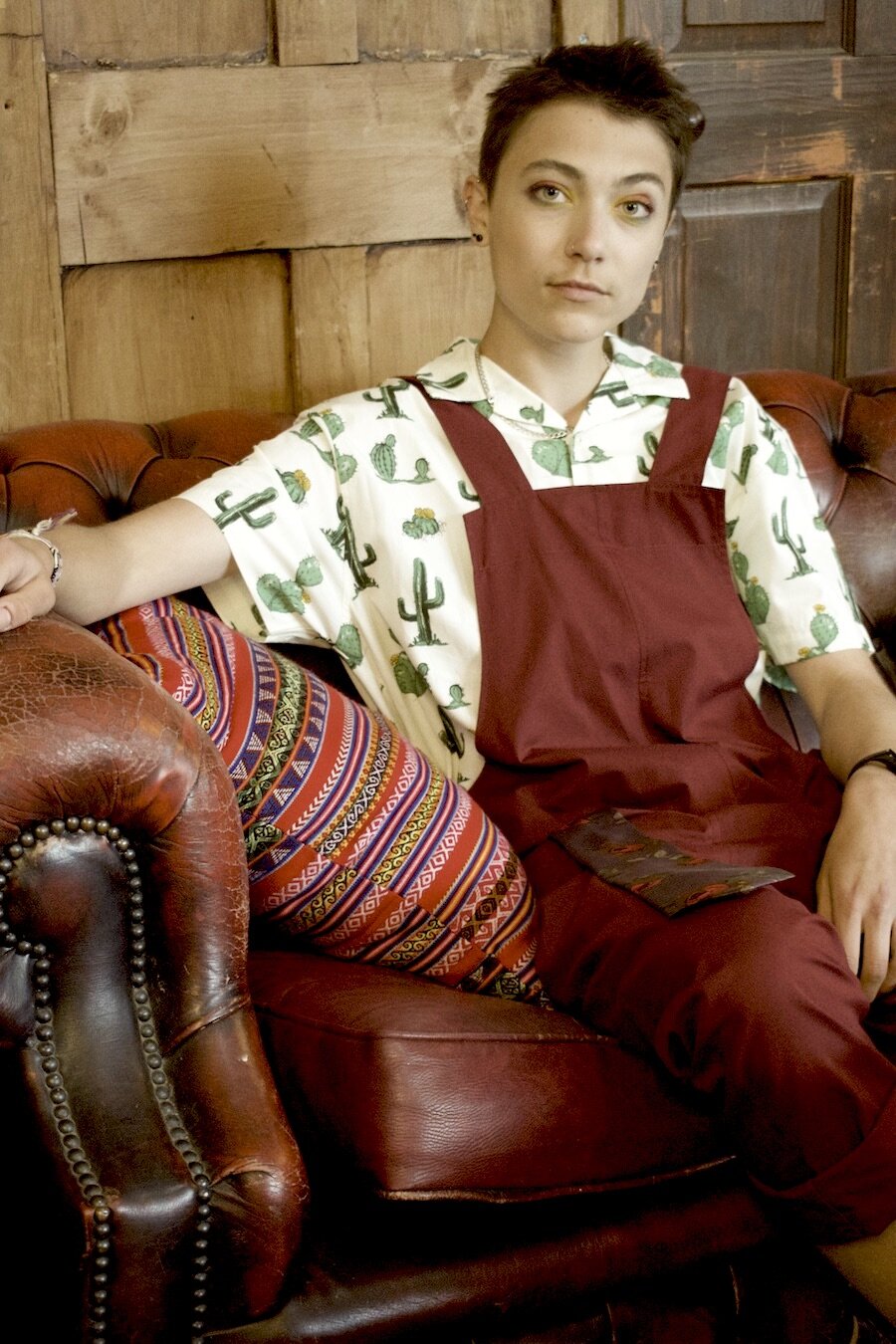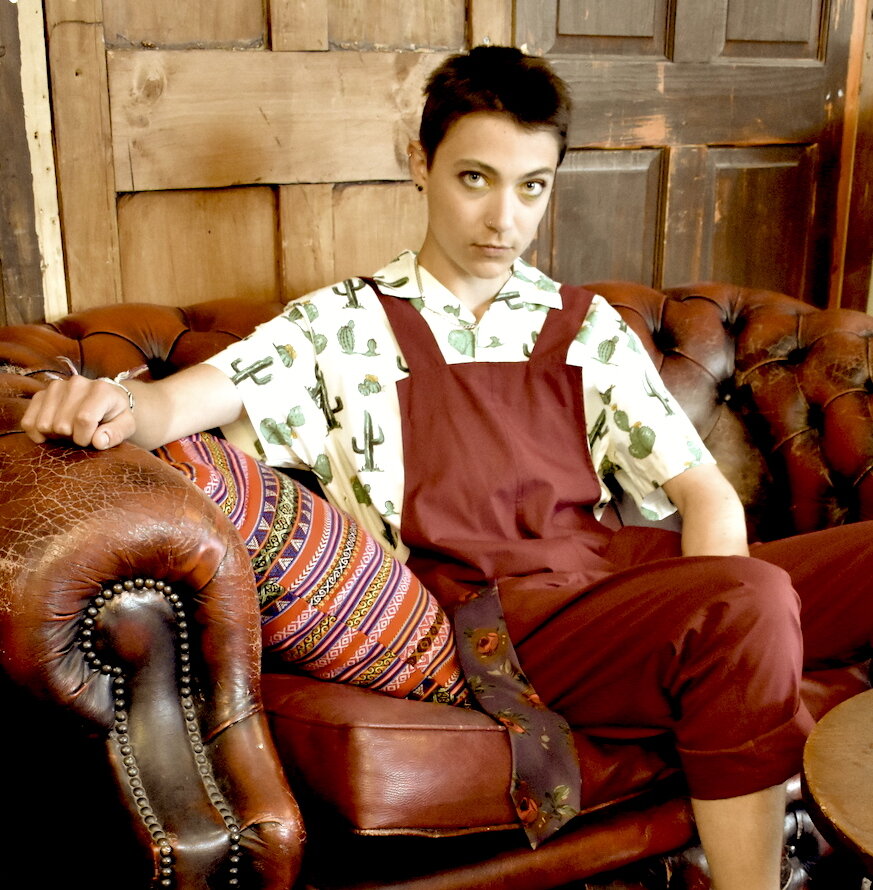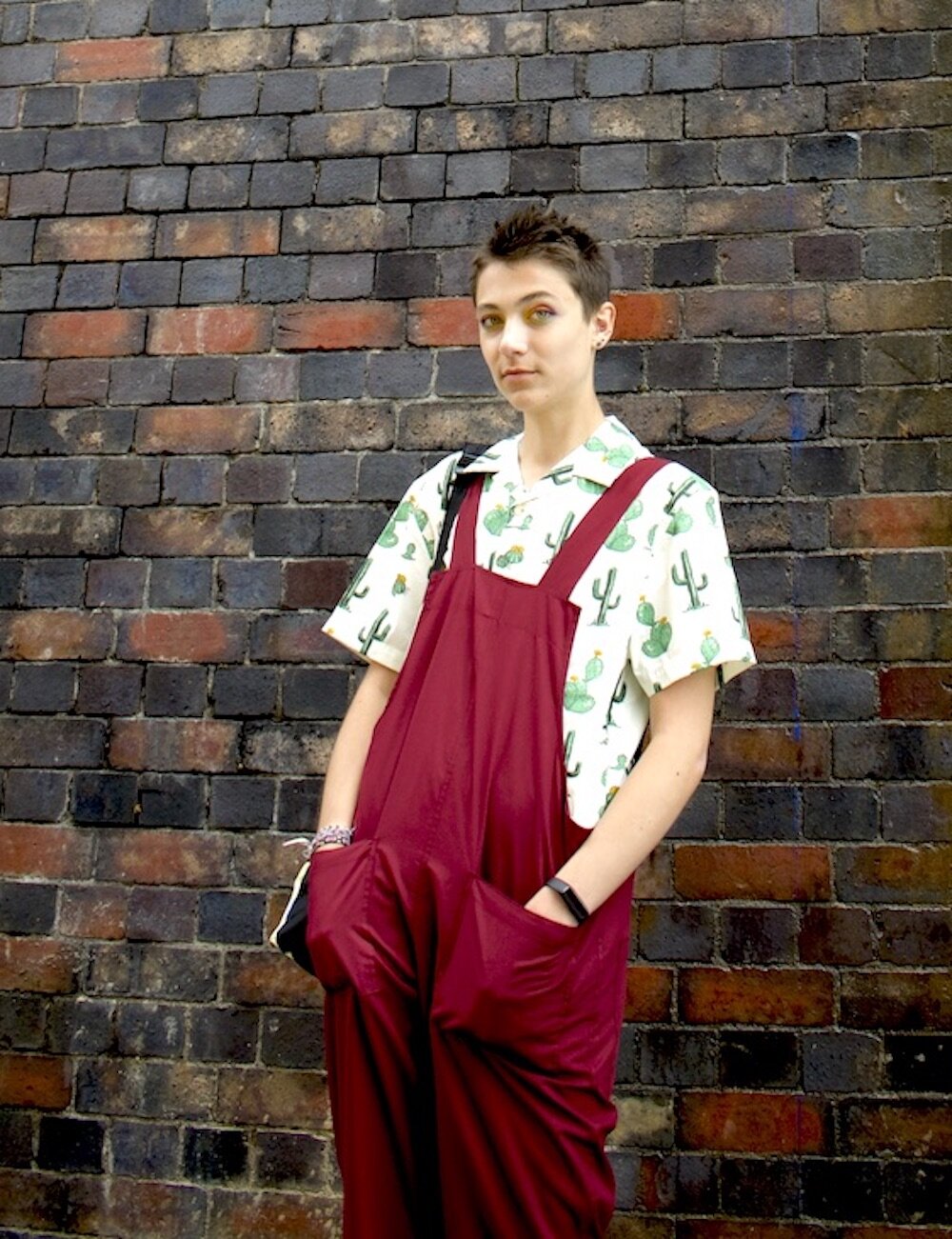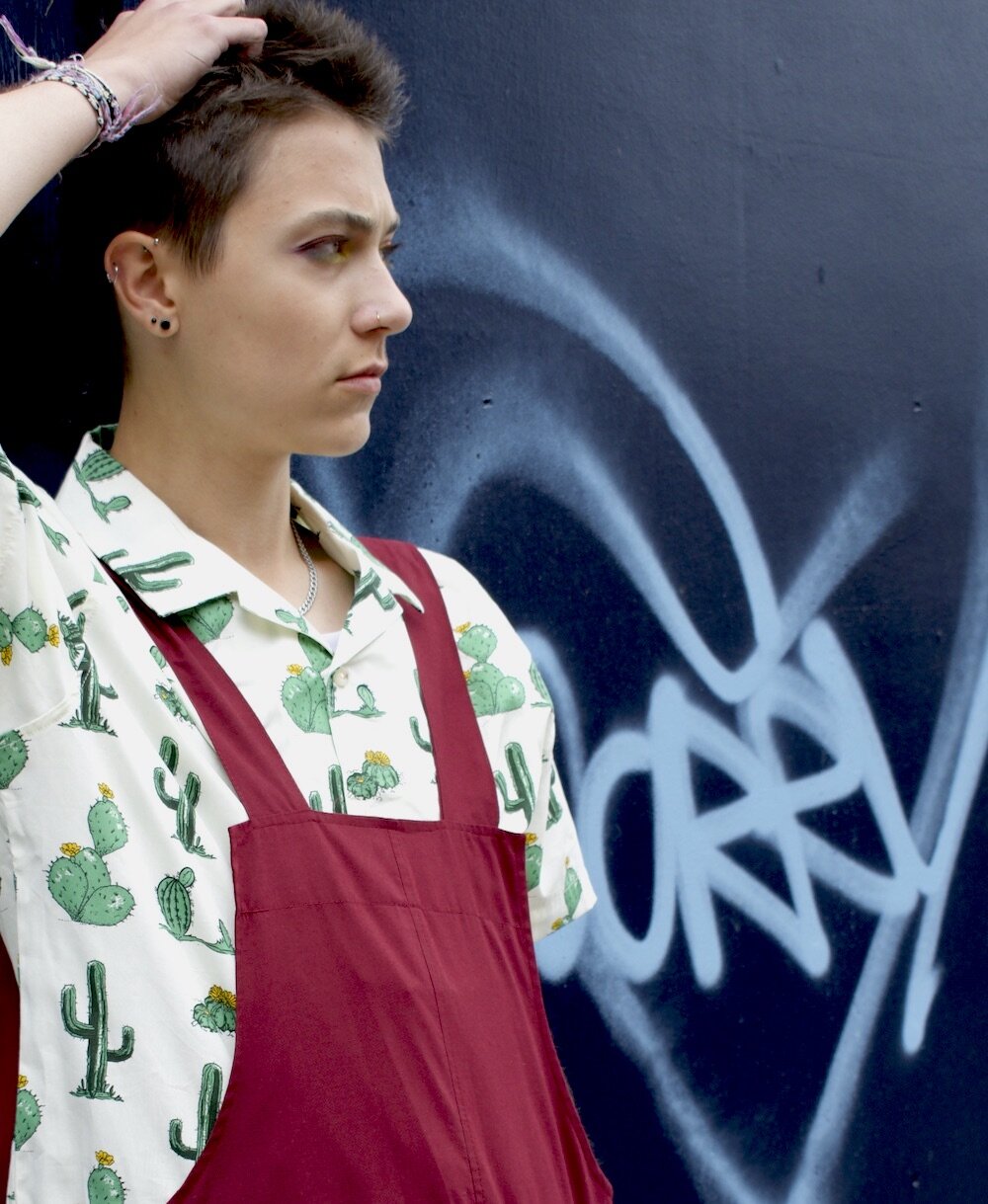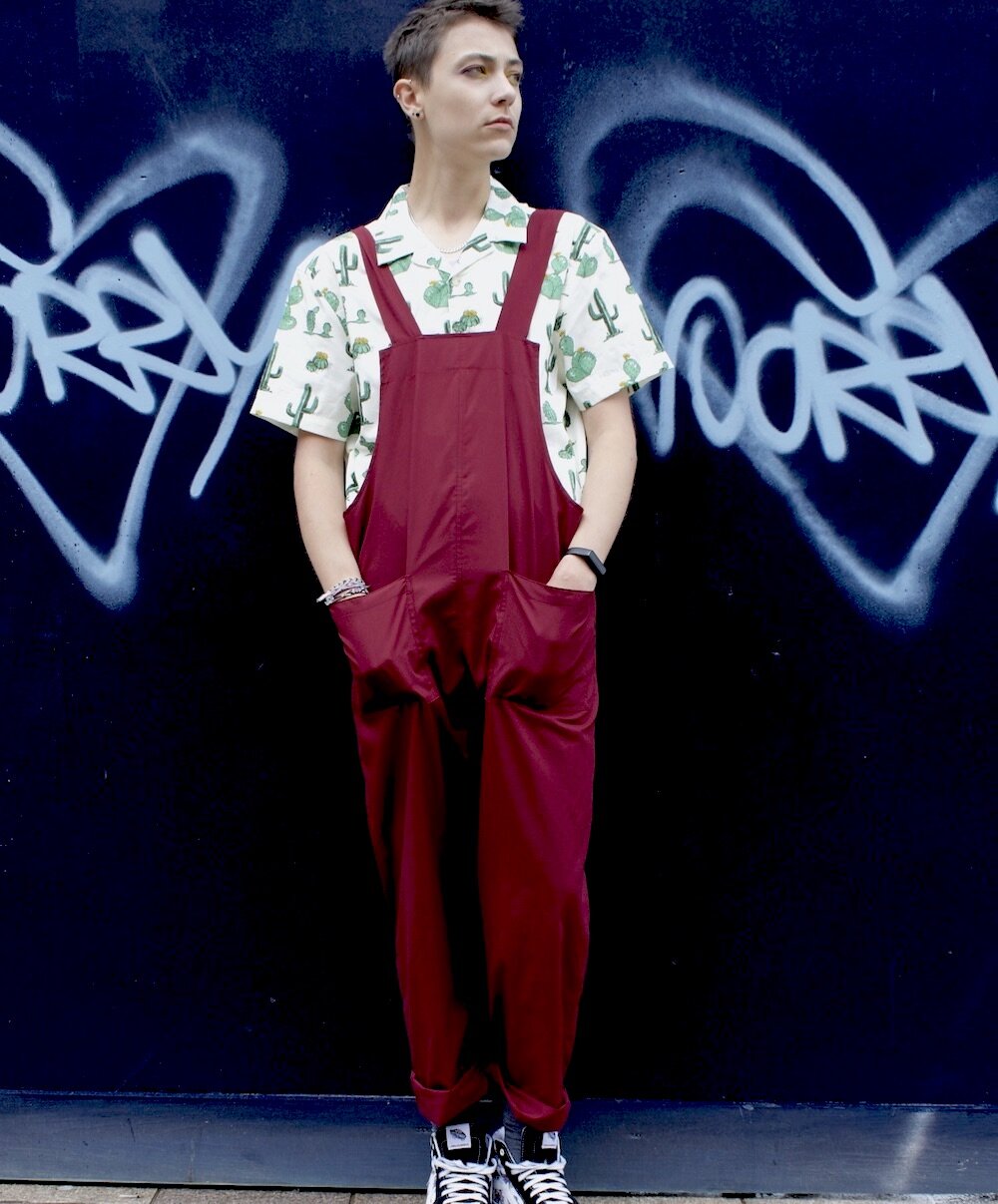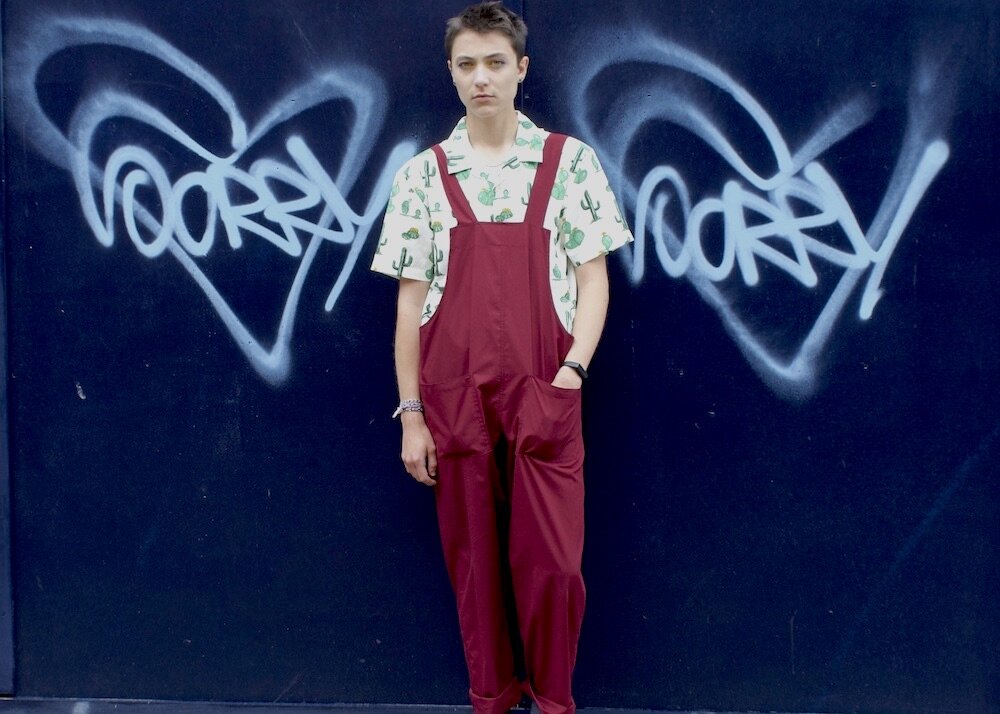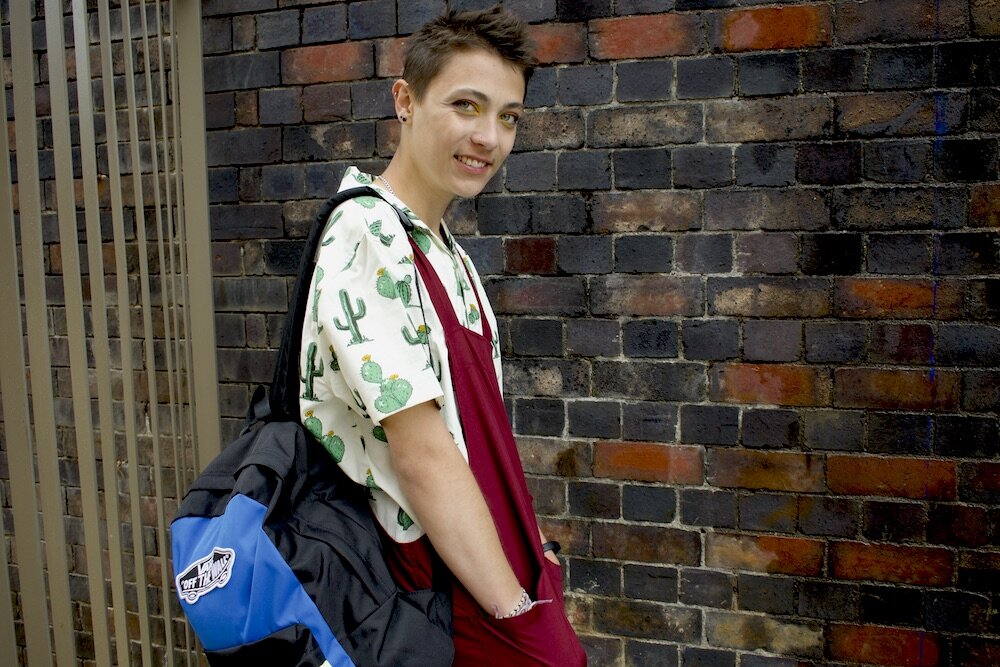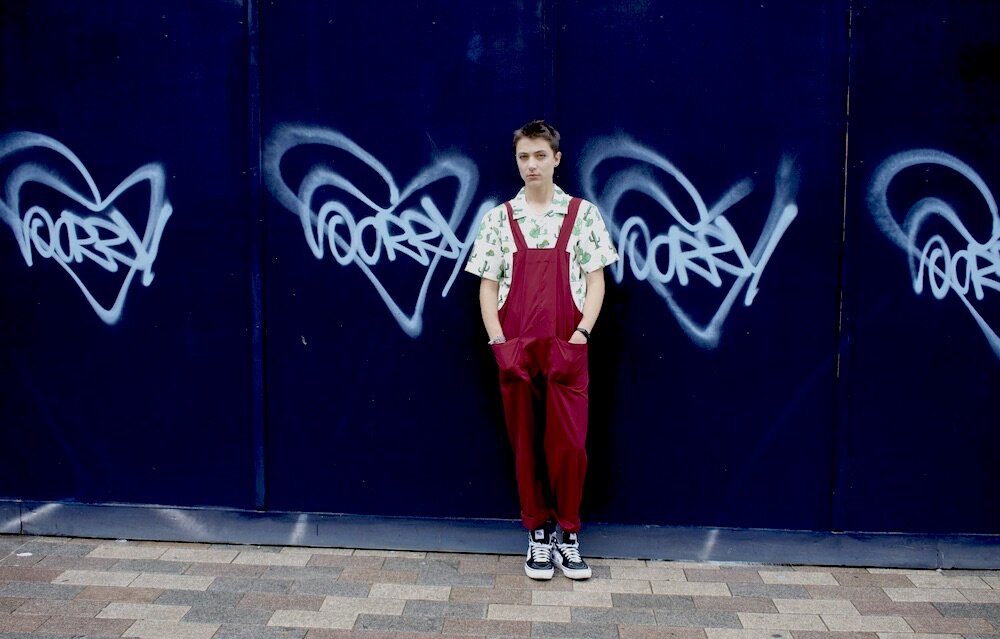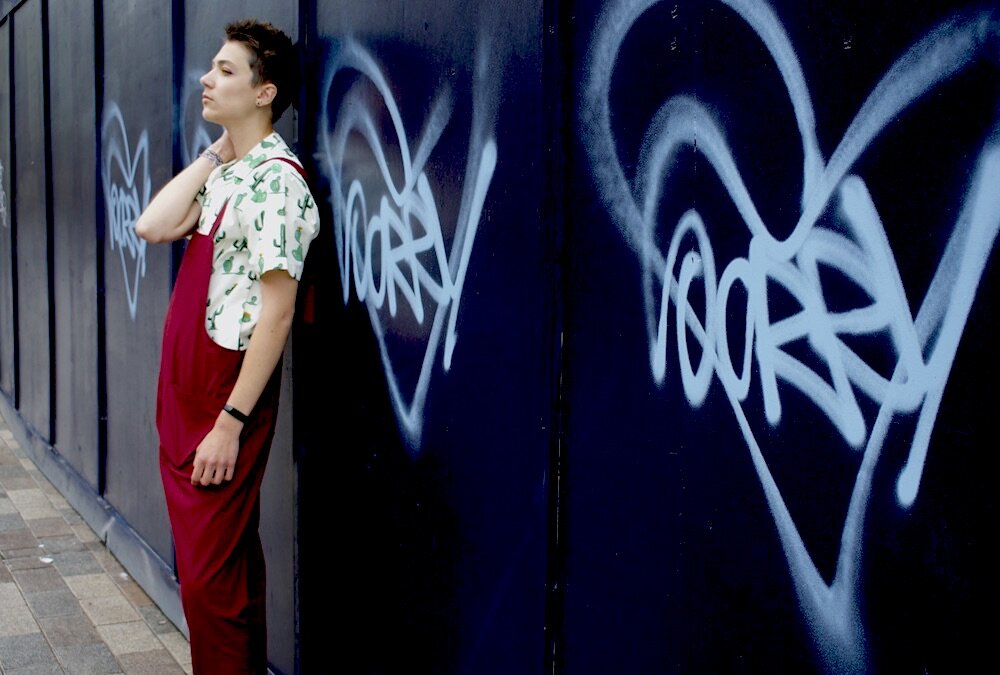Transitional States of Being - Identity & Fashion Modelling
I often like to write about the people behind the clothes, and those I work with.
Jasper is no exception. Seeing as it’s Pride month, now seemed like as good a time as any for this article.
A short time after working with Jasper (then Barbara) on a shoot, I became aware he identified as male.
It came about after I tried tagging him, to find out he’d set up a new account identity on social media and also some indication in the use of a nickname too. I always like to tag and credit the amazing people I work with so this is how I discovered his new identity.
It was almost a year on from our shoot, so I can imagine that me sending and tagging photos we’d done together with him represented as a female model must have felt pretty strange.
Being able to tag those I work with is important as it’s credit for the work they’ve done too and I didn’t think it was right to ignore the previous work Jasper had done, so there had to be a way around this and a way of him still owning his previous identity and work.
ABOVE: ARMANI SHIRT - OXFAM GLASTONBURY STARS: DONATED BY MARK RONSON
During Pride month last year I gave Jasper the opportunity to say something as I was writing about Stonewall which was celebrating its 50th year. It was too early for all that and he was having doubts about continuing to model at that point because he still looked like a girl and that triggered a dysphoria. We agreed on seeing it as a drag queen persona which is how he explained he was dealing with it. I thought this was a good way of doing it, so I could tag him into those previous shots of him as female, by tagging him as Jasper ‘does drag’ and it felt like this was him taking ownership of it. Jasper is a stunning model, however he wants to identify. Either way he is most definitely deserving of the credit.
Jasper made this pretty easy really as all I had to do was change his tag and address him as Jasper with a ‘does drag’ bit, following his guidance. Looking back at the photographs again, the looks are mostly unisex clothing where the make-up transformed the look, with three dresses in the mix.
ABOVE/BELOW: BOY LONDON TOP
One thing I found sad that held Jasper back from coming out was the fact that he felt he could only be accepted if he was deemed beautiful by others: “I would get frustrated with myself because I wanted to be seen as pretty - and grow my hair out’ he adds:… ‘but then I wouldn’t want to be seen as female and preferred keeping it short.’
ABOVE: TOPSHOP VINTAGE 90’S DRESS
I clumsily attempted to write about this in my post last year with a few prompts via DM from Jasper. You can find the post with this photograph on the ThriftVIP grid:
As I’m writing this article and putting it together I wanted to avoid writing too much about the subject myself as this is not my experience. I’ll let the rest of the article and Jasper’s responses to my questions do that instead.
One thing I don’t want to do is generalise on what is a very personal and individual experience, and that needs to come from the lived experience. My questions in this article relate to the thoughts and feelings surrounding Jasper modelling for me (as assigned female at birth), transitioning shortly after, and having to see those photographs alongside dealing coming out as a male model with myself, and of course, the model agency too.
Another year on, and this is the resulting article of an important episode we can all learn from. I really hope it helps some people to feel less alone too.
It’s important that we talk and write about these experiences.
I’m hoping Jasper will also write about the subject more in his own articles or blog, maybe even a Podcast which would be great.
ABOVE: RED SILKY BUTTERFLY PRINT JACKET
What prompted me further to write about this, with the kind permission of Jasper too of course, was an article I’d seen written about Casil McArthrur in the forces for change issue of Vogue.
As Jasper had relayed to me, this is a topic that isn’t mentioned or talked about enough in the fashion industry, even though there are some stunning non-binary models working in the industry, where fashion has perhaps been more openly accepting of gender fluidity over the years.
Adrogyny is no longer just a trend or style or a way of presenting oneself superficially and we’re putting it all out there, on the fashion map. Standing proud and tall as it should be seen, in more ways than ever before.
It’s now starting to feel more liberated and refreshing, free from its boxed constraints of a time gone by as we venture further into our gender bending existence, all of us evolving and metamorphosing as our true selves.
ABOVE: CLEMENTS RIBEIRO PORTOBELLO JACKET
BRAVE NEW WORLDS
Even as I prepared to lay out this article, I wondered if perhaps Jasper would prefer to be referred to as non-binary, as I discovered the he/him pronoun removed from his instagram account as I went to add the link in to the article. If you read on, you’ll understand more about this from Jasper and why he chooses to represent with he/him.
It just shows how fluid gender can be and how fluid we all need to be to move forwards into this brave new and amazing world.
We met up to do a mini shoot on 25th June so I could put some recent photographs of Jasper identifying as male now, alongside the previous ones, and in particular for this article. It may be the first shoot for Jasper identifying as a trans man. It’s an exciting time and one I feel needs to be celebrated. Plus, what a great job on those eyes! All Jasper’s own work. With thanks to Hopkinson for allowing us to shoot in their amazing emporium.
Insights…
Madeleine: How did it feel modelling as female at a time when you were considering transitioning?
Jasper: To put it simply, it was difficult. My last shoot presenting as female was hugely enjoyable but I felt so conflicted. I believed in being honest to family, friends and everyone around me about who I was and presenting as female felt like cowardice. I was too scared of possibly losing opportunities by coming out. I thought it would simply be easier to ignore my discomfort and get on with it.
From around 16 I knew I was definitely not cisgender and when I started modelling at the age of 18 I had already cut my hair short and experimented with how I presented myself and different names. When I originally discussed with my family how I felt they were worried and uncomfortable and even though it was not said outright, it felt like a huge rejection.
ABOVE: ZOE KARSSEN SLOGAN KNIT
Hence, instead of committing to coming out as a trans man (though this was the label I identified with most from 16), I pretended it had never happened, like I didn't feel the way I felt and like I was still my parents' happy daughter. I tried to just copy what those around me wore and the make up the girls my age wore to fit in and to make my parents happy. Although on the outside it may have seemed like I was thriving, on the inside I felt more and more distant from myself. I wasn't sure what I wanted to do with my life and what direction it would head in. I did not know what I wanted, except that I 100% did not want to grow up into a woman.
So I channeled these turbulent and conflicting thoughts into my modelling work, dressing androgynously and letting myself behave more freely, not worrying about if this pose was more feminine or masculine and not caring. This gave me so much confidence and helped me to stop trying to force myself to conform to our society's gender norms which I had become obsessed with in order to hide my "transgender-ness". Working with so many creative individuals has definitely helped me embrace and liberate me for who I was.
M: Do you think it helped your transition by modelling as female?
J: It definitely made me realise what I was and was not comfortable with. In female modelling and modelling in general it often feels as if you must show off our body shape, but this made me hugely uncomfortable as the last thing I wanted to do was show off my female shape. I despised my shape, hated it. I wanted to hide my curves, hide my face, hide myself away where I was not open to ridicule or shame. However as I got used to working in the modelling industry I discovered that all that ridicule was coming from me. I was shaming myself and critisicing myself when my employers were complimenting my work, saying they couldn't believe I had been modelling for such a short time and loving many of the ideas I came up with.
Modelling as female definitely helped me see that the way we present ourselves can be seperate from what we identify as. Clothes do NOT define gender. Men CAN wear make-up and skirts just the same as women CAN have short hair and CAN wear trousers and no make-up. Due to our consumerist society and traditional gender roles we have created such tight rules about what men and women can and cannot do. It's insane when you think about it - a piece of fabric being cut and sewn together in a slightly different manner to accentuate different parts of a body like a t-shirt is seen as a women's top or a men's top. In reality, it's just a top. Why should colours or patterns I wear on my body dictate what I know I am? Clothes have no power over my identity. Challenging the status quo and dressing androgynously, mixing "male" and "female" items in my wardrobe may have turned heads and sent a few weird glances my way but I stood firm and continue to stand firm in my beliefs that we should all allow ourselves a little more fashion freedom and not let ourselves get carried away by what society thinks we should look at just because of our physical sex.
“I try looking at these photos and reminding myself that though I may look a certain way in some pictures, this does not define my gender identity. I can be a man and wear make-up and feel f***ing fabulous and there is nothing wrong with that.”
M: ‘Dapper Jasper does drag’ was the description we decided would work when I shared the images we did together for ThriftVIP where you modelled as female….
…How does it feel when I share these on the grid now?
J: In all honesty, I often look at these photos and photos from other shoots in absolute wonder - it feels as if the face staring back at me from the screen isn't me. When I model, I often switch into an alternate persona which is more confident and bubbly and outgoing when I am struggling to manage dysphoric thoughts. When I look at past photos, in some I see a strong woman who isn't afraid to stand up for herself or her beliefs, confident and putting her image out there with no shame or regret. In others, I see glimpses of my unsure more cautious inner self struggling wearing "female" clothing and being documented as a woman.
When I came out to you, you were so kind and understanding. It gave me hope that the fashion industry would be accepting of my transition. At the start, to cope with dysphoria it would help me to tell myself my modelling was like drag and that my modelling persona was similiar to that of a drag queen. Now that I am more accepting of myself and my own identity I try looking at these photos and reminding myself that though I may look a certain way in some pictures, this does not define my gender identity. I can be a man and wear make-up and feel f***ing fabulous and there is nothing wrong with that.
Changing your appearance from your normal day-to-day style is thrilling and exciting, for me at least. It helps me explore what I do and do not feel comfortable with and what represents a part of me and what doesn't. I would personally encourage anyone to try shaking up their style every once in a while to keep themselves open-minded towards their own and other people's appearance.
M: …Do you still embrace that female side, or does it feel like a distant memory of someone you used to be?
J: Nowadays I embrace the feminine parts of my personality and interests, not letting the status quo get to me. I believe "men's" fashion allows for a lot less freedom than "women's" fashion, which is probably linked to society's toxic masculinity. I personally still wear many clothes which are from "women's" parts of shops, simply because they are sometimes more interesting. For example, the other day I finally stumbled across some dungarees in the "women's" section of Primark. I have wanted dungarees for ages and I wasn't going to stop what people thought when I bought them at the till stop me from buying them. I absolutely love them, even though they are a "women's" pair of dungarees. I, a man, wear them and feel and look great!
As my body slowly changes across my transition I will probably embrace this more, but currently wearing skirts or dresses still feels hugely uncomfortable and brings back too many memories of pretending to be a girl. However, as my body changes I can't wait to rock them and prove to society that men can wear feminine items and express themselves however they want.
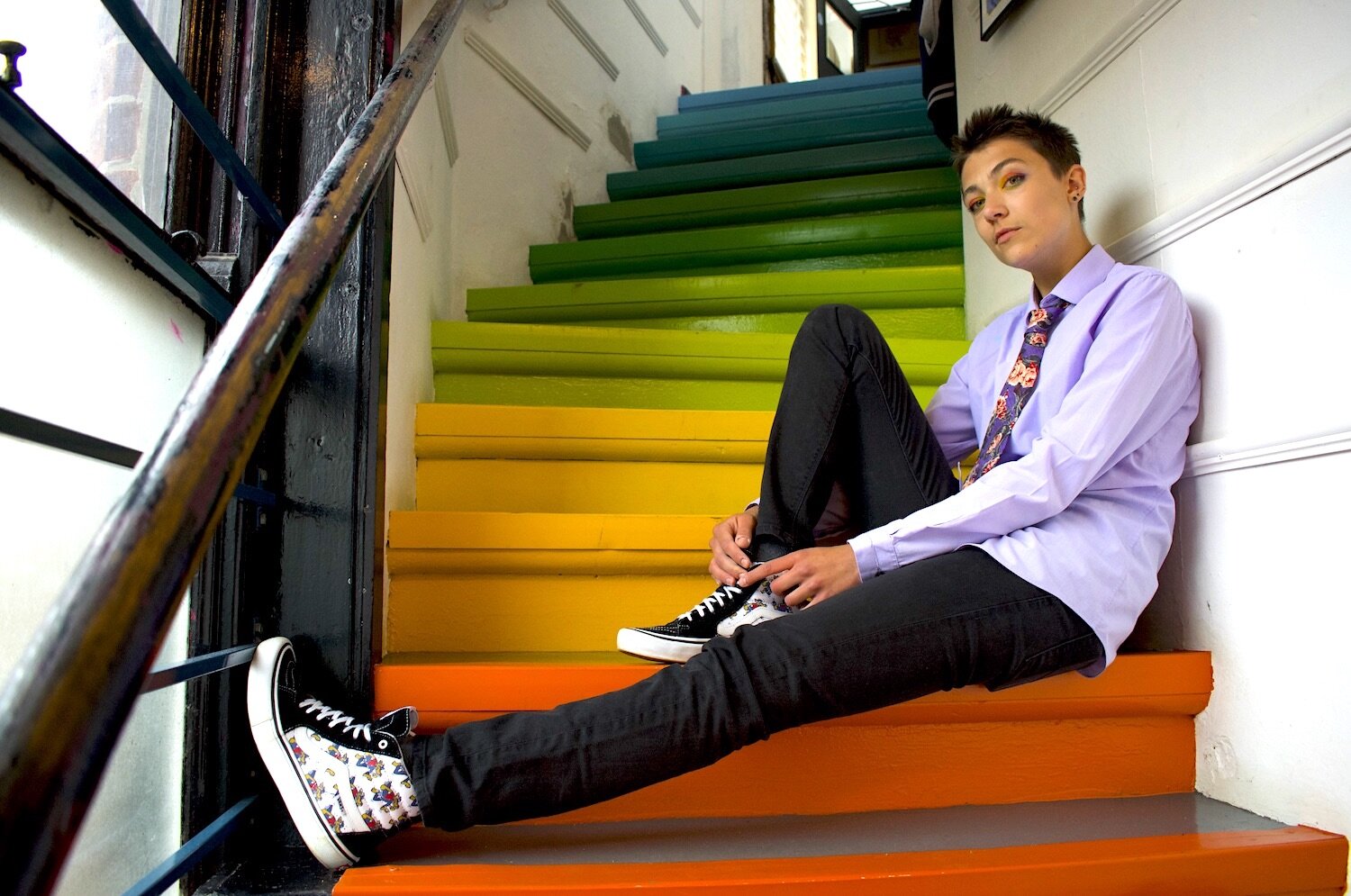
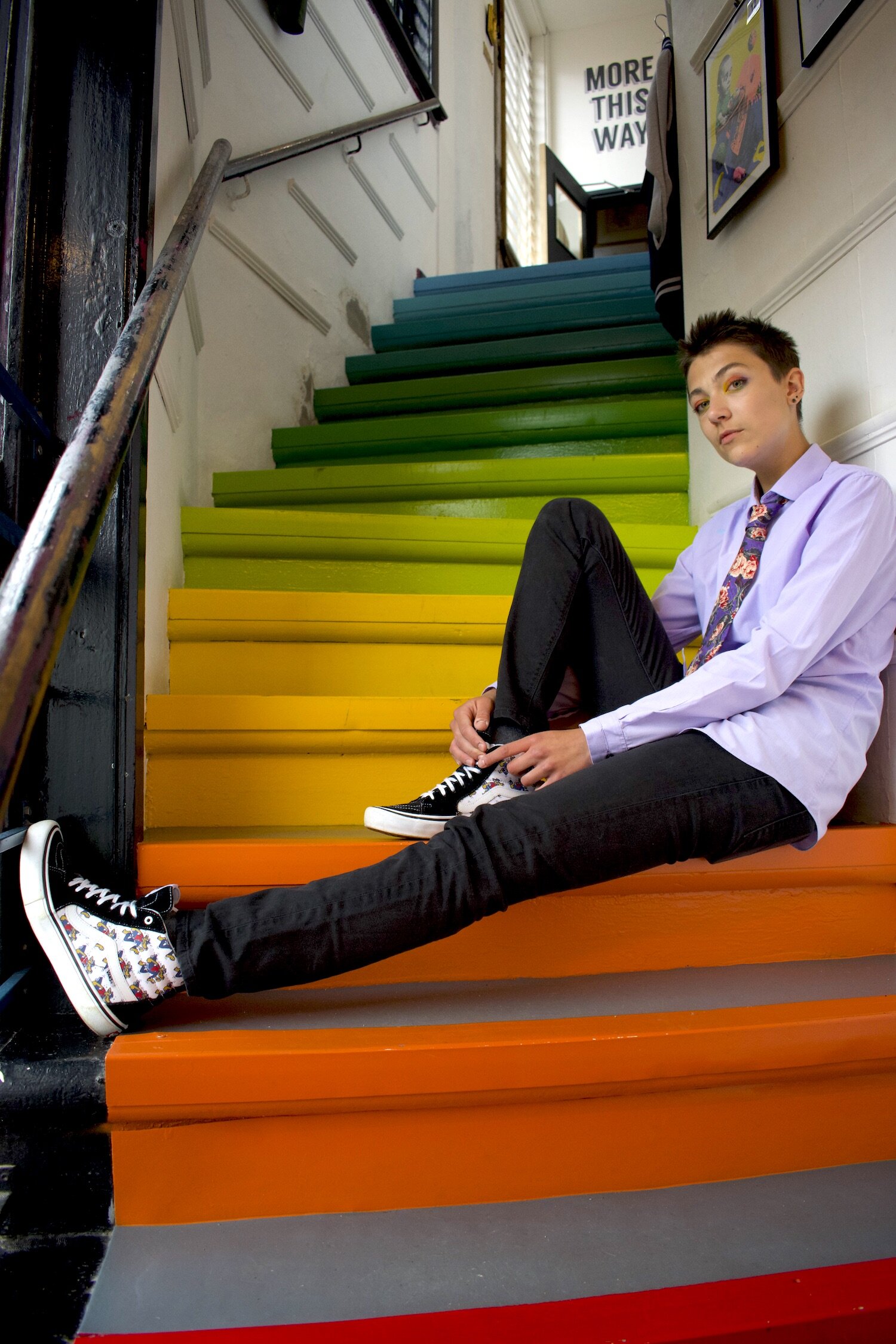

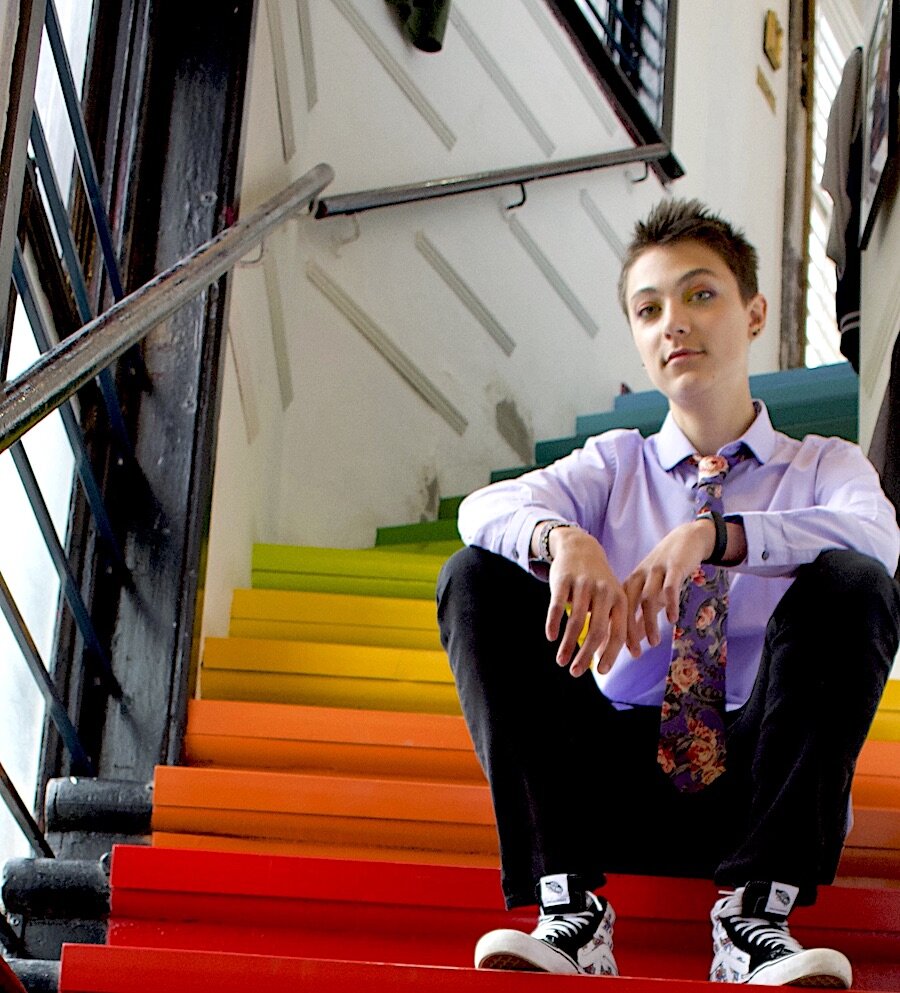
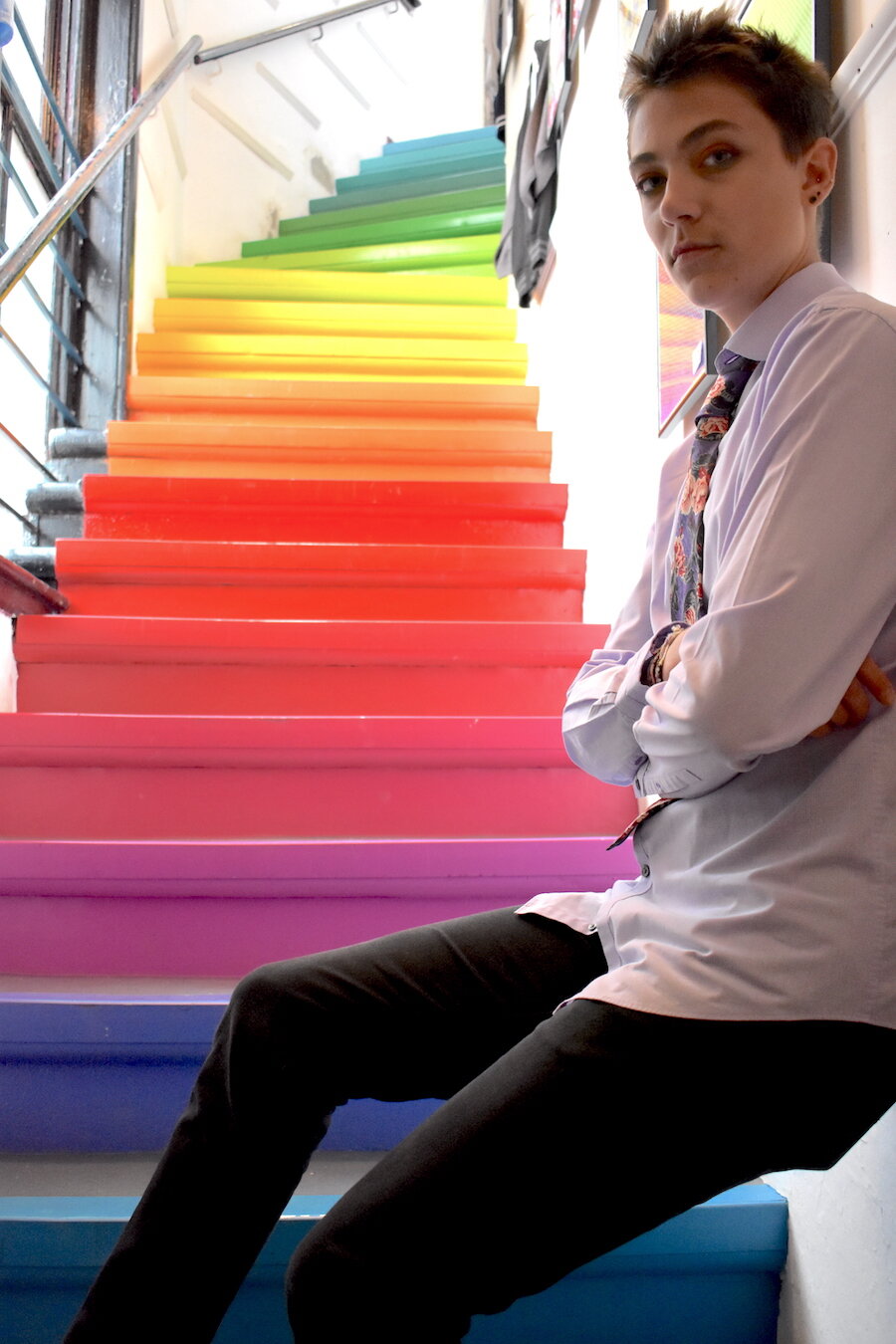
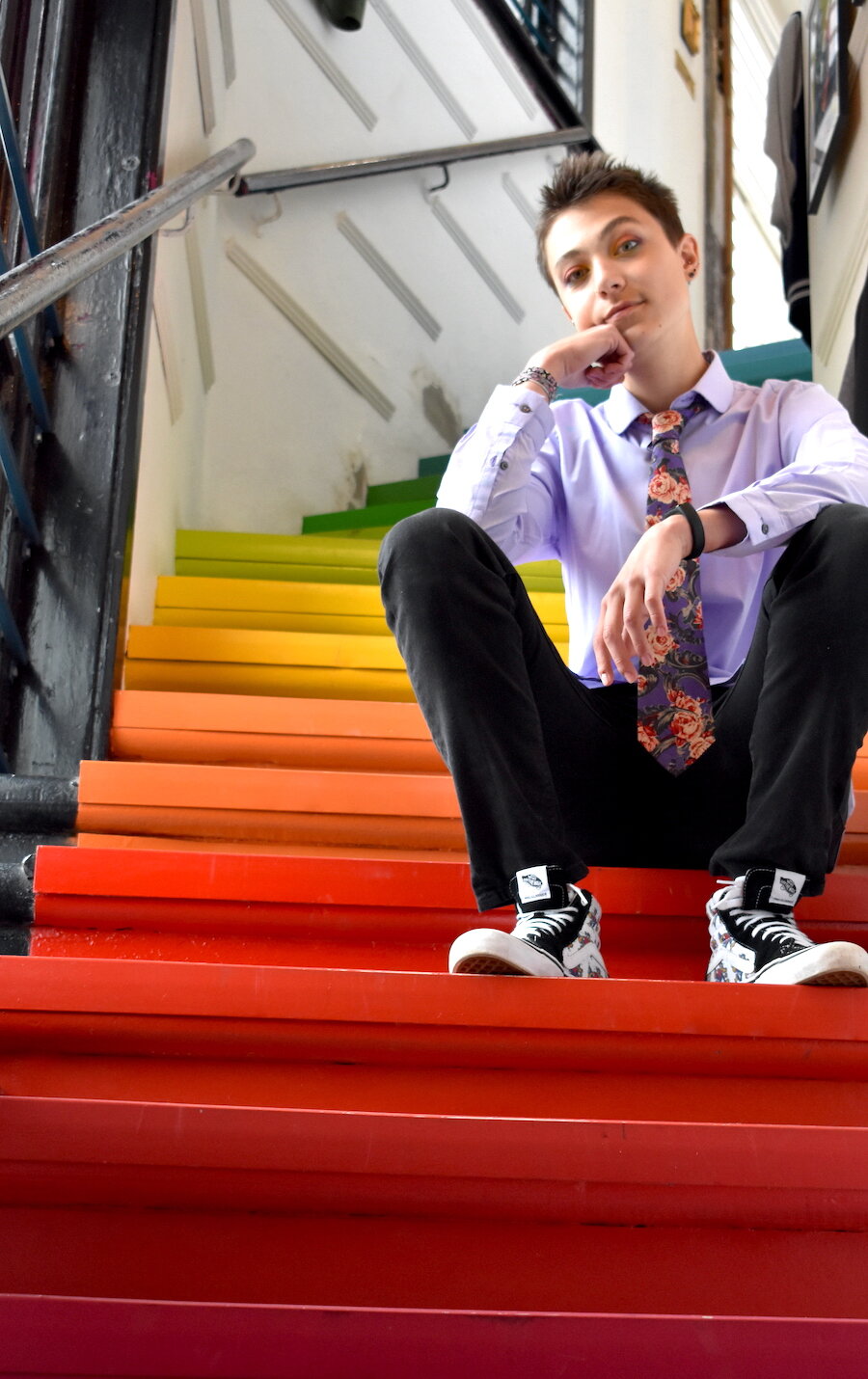
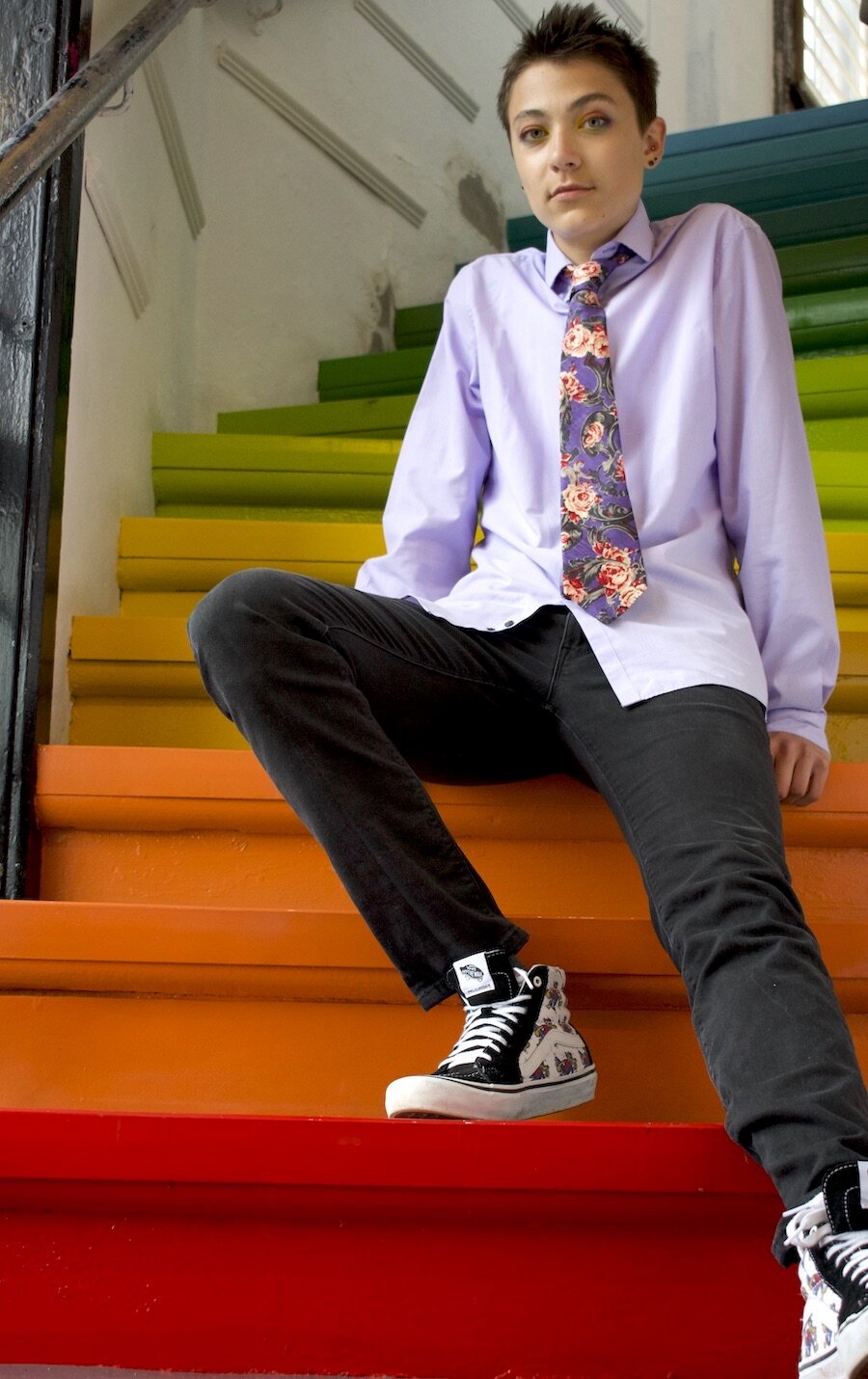
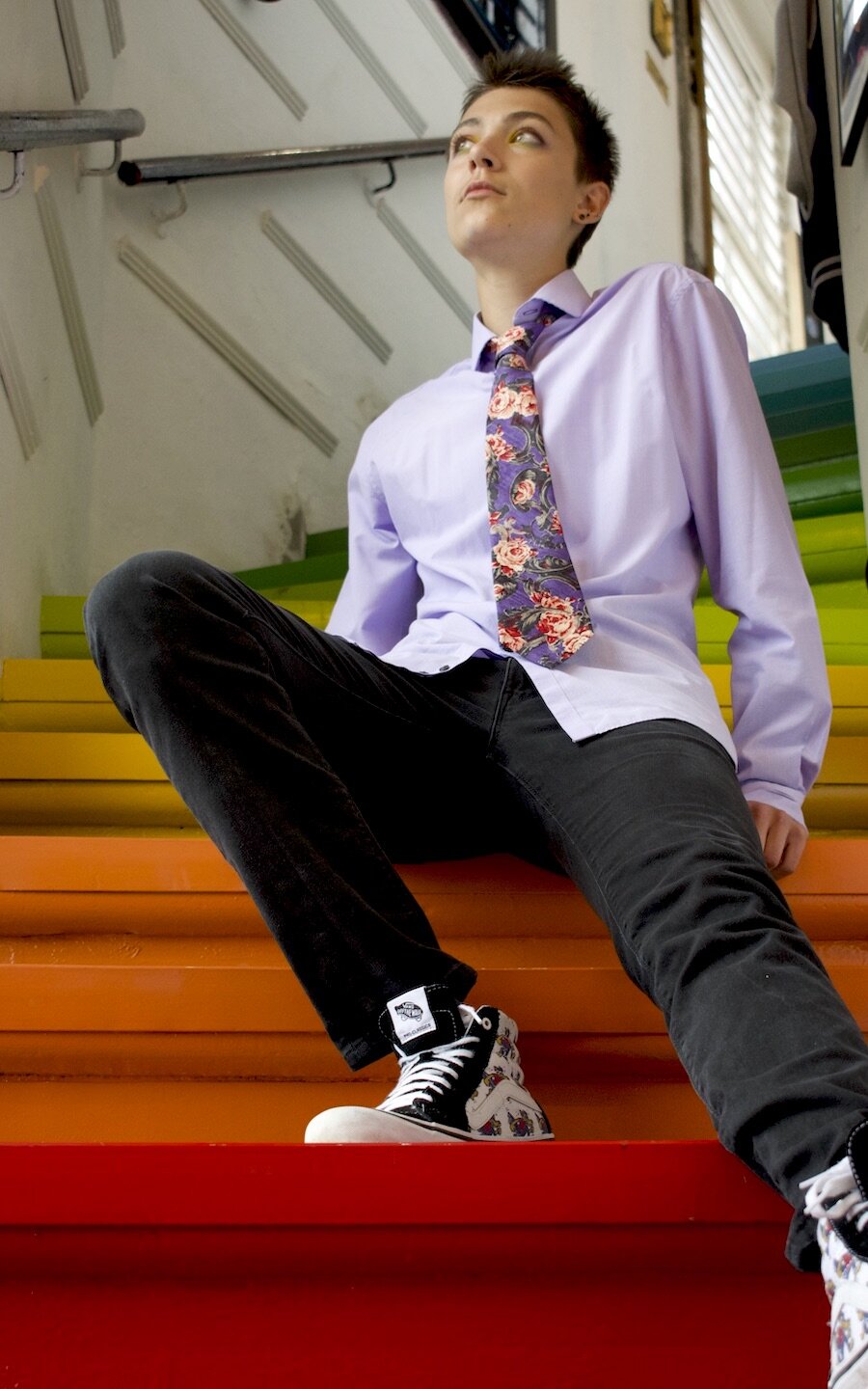
M: … And finally also in reference to this last question, does using the terms He/Him help a lot now?
Do you think the pronouns They / Them helps those preparing to make the transition or perhaps if that femme side still feels a significant part of who they are?
J: I personally started testing the waters of my identity by using they/them pronouns, to see what it would feel like not receiving a pang of discomfort every time someone referred to me as she. I know many people find themselves in a similiar position where they start their transition journey using one set of pronouns and then switch to another set, and that is completely fine. Many use he/they or she/they pronouns and thousands of other combinations, which I think is great! However it is important to recognise that they/them pronouns are not always a step towards using other pronouns as it was for me. Many people prefer they/them because it allows them freedom away from the male or female division. Anyone should be free to use any pronouns, they do not necessarily have to be aligned to your identity.
Above/Below: Paul Smith Silk Tie
For me, pronouns represent parts of a person's identity. Hence it is so important to be respectful and use the correct pronouns for every member of our society, as this is just common courtesy. Why wouldn't you treat your fellow humans with respect?
It's odd really how such small words can have such a strong effect. Now, pronouns are subject to public debate. In the english language we have always used "they" when referring to someone whose gender we are unsure of. It is not that huge a change and I personally do not see why many members of our society have such a problem using gender neutral pronouns to refer to someone when asked to do so by the person. Now, even though using they/them pronouns or the gender neutral title Mx. is recognised in the UK, non-binary is still not recognised as a legal gender. This is despicable and I cannot believe that in 2021 the UK government can still vote against adding a gender that thousands of people identify as to official documents and processes. A non-binary individual can have Mx. before their name and can be referred to as they/them but on their official documents it will still (probably) say the gender they were assigned at birth.
What's even weirder is that individuals born intersex would also be forced into having a gender marker which says either male or female, even though they are born neither/nor. Not identifying with the two extremes of the "gender spectrum" - male or female - is not celebrated and in fact often reproached, attacked and discriminated against systematically. Though this recent news does not directly affect me, I grieve with my fellow LGBT+ brothers, sisters and siblings who are now being denied their rights.
For me personally, I am most comfortable using he/him pronouns as I believe that if gender is a spectrum (and obviously some people who may be agender or non-binary are happily floating away from the spectrum, which makes them just as valid and important as anyone who is on the gender "spectrum"), I am closer to male than the 50/50 "grey area" of non-binary. Using he/him pronouns is what makes me feel most confident and, most importantly, happiest.
M: Do you think it over-complicates or helps to define sexuality using these terms, for you personally?
J: I think that's the topic most people get so infuriated about - that people who are not heterosexual and not cisgender exist. I agree that sometimes the world of all the various "labels" for sexualities and genders can seem daunting and as if it is expanding every day and some are very small minorities which we may not come across on a day to day basis knowingly. However, it is just as important to respect them and remain open-minded. Sometimes a label may have a confusing name but when you learn what it means it becomes simple. We as a species have language and use language to communicate. Using one word to specify an identity or sexuality is simpler than giving the definition. Think about it, instead of saying, "can you pass me the metal cylinder which is open on one side with a handle on one side please?" it is much easier to say, "can you pass me the pan please?" It is just the same as when discussing sexuality to say "pansexual" than go into your preferences and whole relationship history.
When I came out as a trans man, this did not affect how I viewed my sexuality as I am pansexual. However, it can get complicated for someone who was assigned female at birth and is attracted to women, a lesbian, comes out as transgdener or non-binary. They then change sexuality labels: if they are a trans man, they would be straight, if non-binary they can choose to stick with the lesbian label or adopt a different label that they feel most comfortable with. I personally know a few non-binary lesbians and many say they wouldn't choose to stick with the lesbian label but it is easier than explaining they are attracted to women. This can also be difficult for the partner of someone who may be transitioning. Some may start questioning their sexuality, but it is important to remember that a trans woman or a trans man are just women and men. Liking a trans woman as a man does not make you gay, you can still be straight. If you’re a man and find yourself attracted to a trans man, then sorry but that means you aren't straight.
“So if there is one message I would like to finish this with it’s this: Be open-minded, be courteous and be kind to yourself and others.”
NEW STYLES
It’s been great to meet up again and get some new shots, working with Jasper as he identifies now, to showcase his own style.
I added a few accessories to Jasper’s ensemble, from the ThriftVIP collections (Paul Smith Ties), and some amazing dungarees made by Tiger Projects where you can bespoke your own. They can make these in any size, made to order, from XS-XXXL so why not pop in to see them on Carrington Street, Nottingham at the Urban Rooms, try a pair on and they’ll tailor to fit. Prices start from £40. For more on their zero waste products, visit the Tiger Community Store.
We did the shoot on Station Street in Nottingham, and also at Hopkinson Vintage, Antiques & Arts Centre who kindly let us photograph inside. It’s my favourite local, combining all the things I love in one great building. There’s such a great vibe here and the selection of goods on offer is brilliant. It’s somewhere i often go in search of unique finds, to handpick special pieces, just for ThriftVIP Lovers.

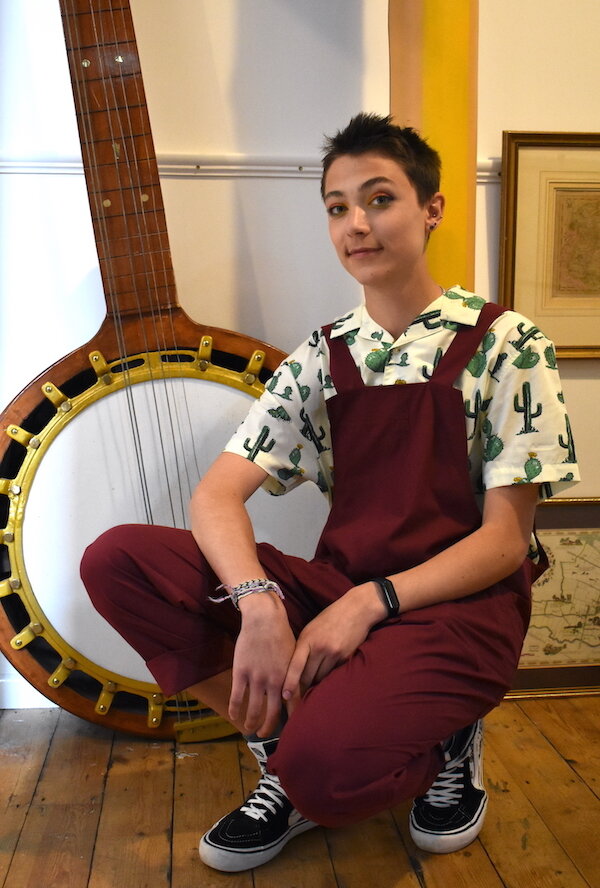
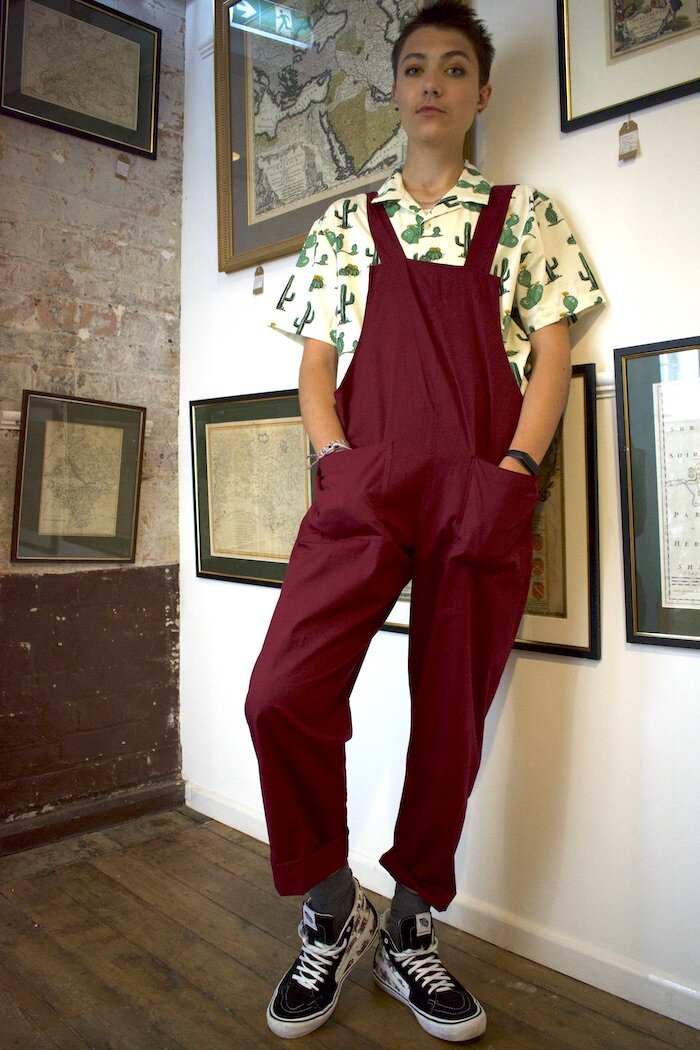

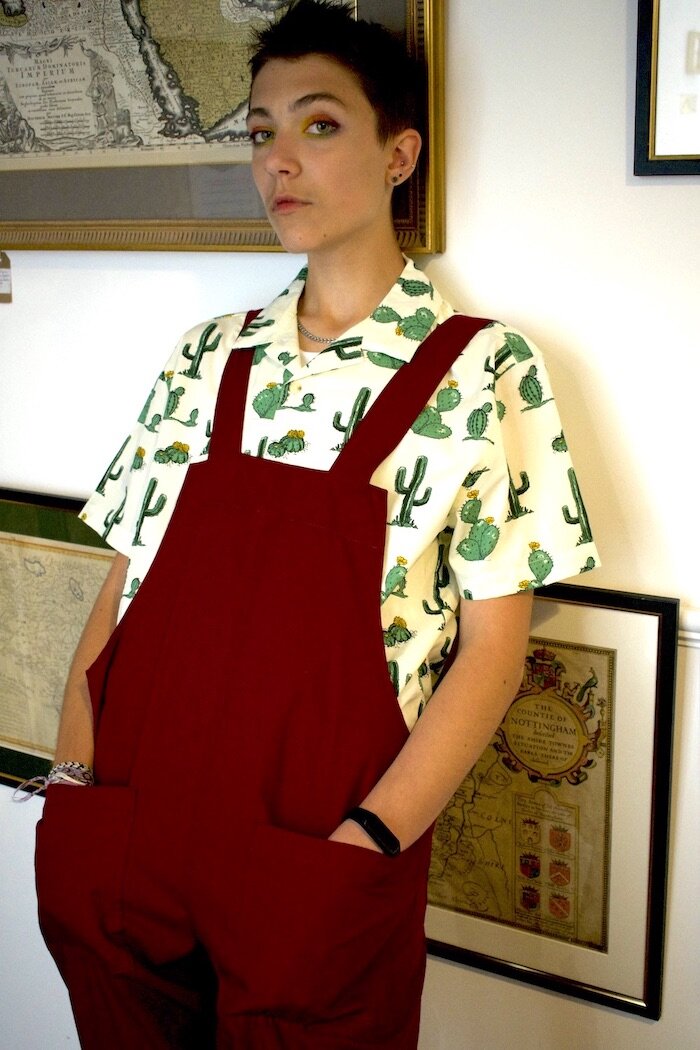
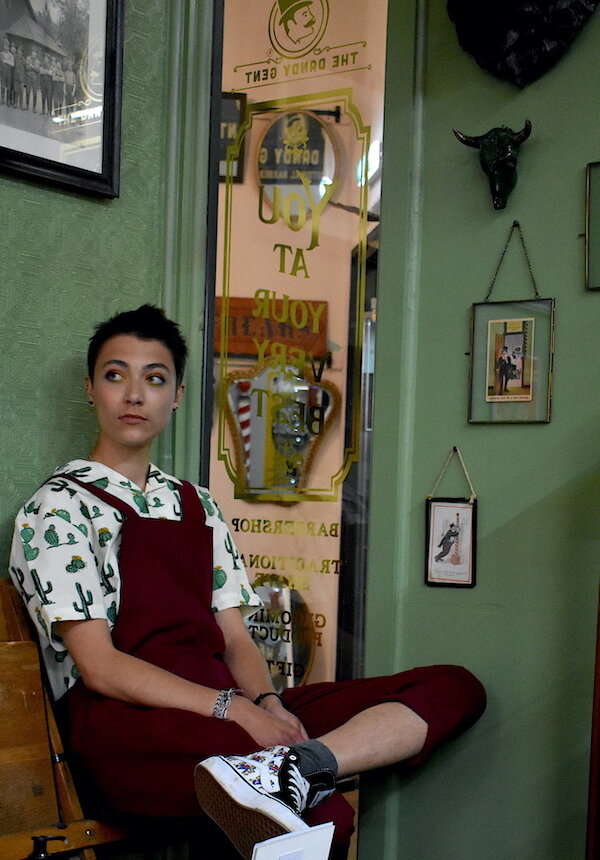
ABOVE: Images upstairs at Hopkinson, and at The Dandy Gent on the first floor
“I am inspired by Jasper's bravery and confidence to be himself. I know that we have a long way to go but I hope that as his agents we can work with him to help him feel properly represented.
It brings me a lot of comfort to know that working with Madi at Thrift Vip has been a positive experience for Jasper and that they have kept in touch.
Thank you Madi for asking me to comment, I think it is so very important to keep talking, it is wonderful how much support you get when you open up to people.”
Anna Gray, Director Model Students
Above/Below: Paul Smith Floral Silk Tie
Above/Below: Dungarees by Tiger Projects
How many trans people are there in Britain at the moment?
‘We don’t know. There isn’t an accurate figure for how big the trans community is. That’s because it isn’t asked in the census, and there isn’t any research that’s been done that covers enough people to be statistically significant.
The best estimate at the moment is that around 1 per cent of the population might identify as trans, including people who identify as non-binary. That would mean about 600,000 trans and non-binary people in Britain, out of a population of over 60 million.’
Source: Stonewall.org.uk
If you’ve got any questions, then you can get some answers here
A step on this road is one that involves presenting yourself publicly with your new identity. Socially transitioning and hormonally or medically transitioning are quite different but not exclusively necessary components of transitioning. One without the other or both are purely personal choice.
Bisexuality is at its core the attraction to two or more genders, while pansexuality is the attraction to all genders or regardless of gender. Polysexuality is the attraction to many, but not all genders. Pansexuality and bisexuality are similar, but not quite the same.
This is evolving all the time, and as Jasper explains, there are already new terms that he had only just heard about too. As he says, the best way to approach the subjects around gender and identity is through kindness and an open mind. Change is constant, and we are complex, beautiful beings.
more resources:
Thank you, Jasper, for sharing your insights with me and for agreeing to let me share them here in this article.
You are an inspiration. With thanks also to Anna at Model Students for her contribution and assistance.
To many I’m sure who are out there and might feel alone, this will be really helpful and I think this will help a lot of people understand more about the world of transitioning, and the stigma surrounding gender constraints and identity within our society. As our society evolves and transforms to suit us all a whole lot better, all we can do is keep talking, listening and respectfully allow safe spaces for this.
Let’s embrace the beautiful complexities of being human.
Gender, Identity, Sexuality, they’re all very different aspects of who we are. We are not always defined by one or the other regardless of societies labels.
Thanks for reading,
Madeleine x



